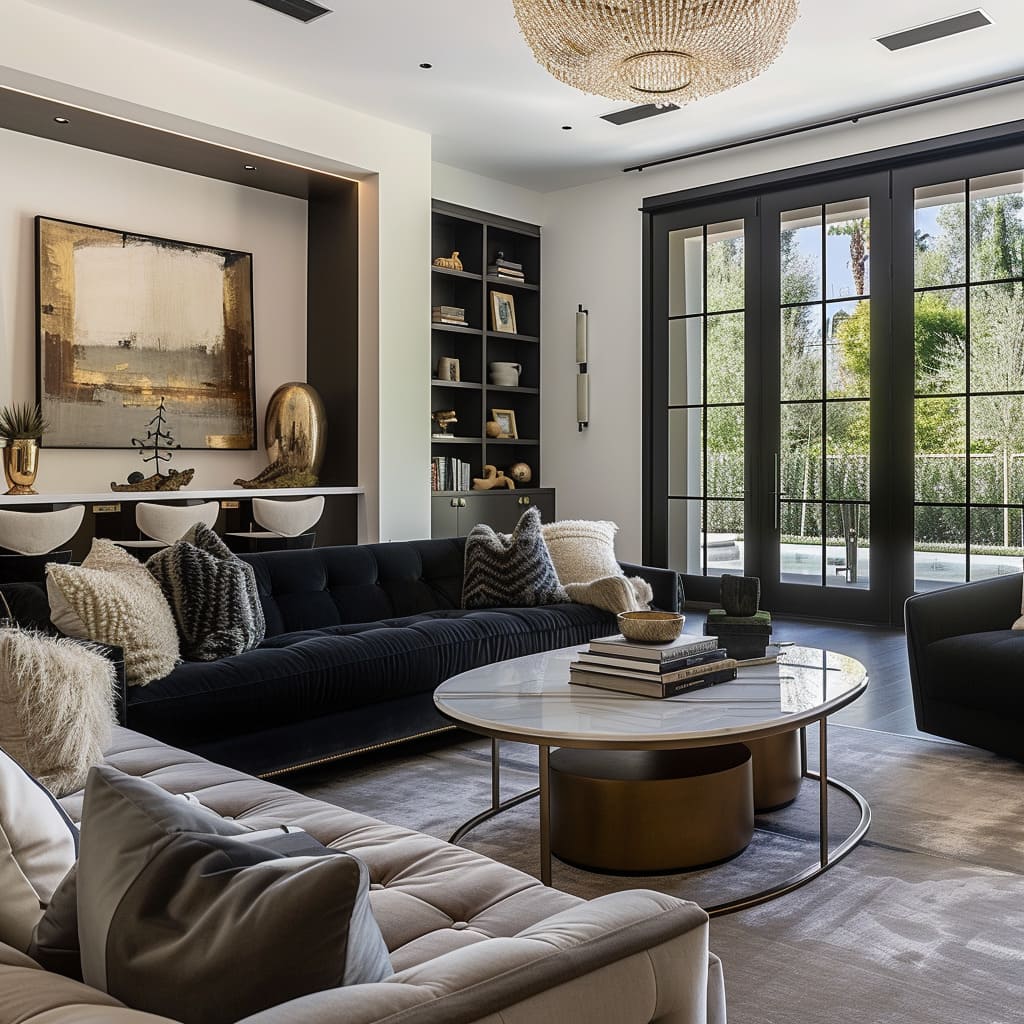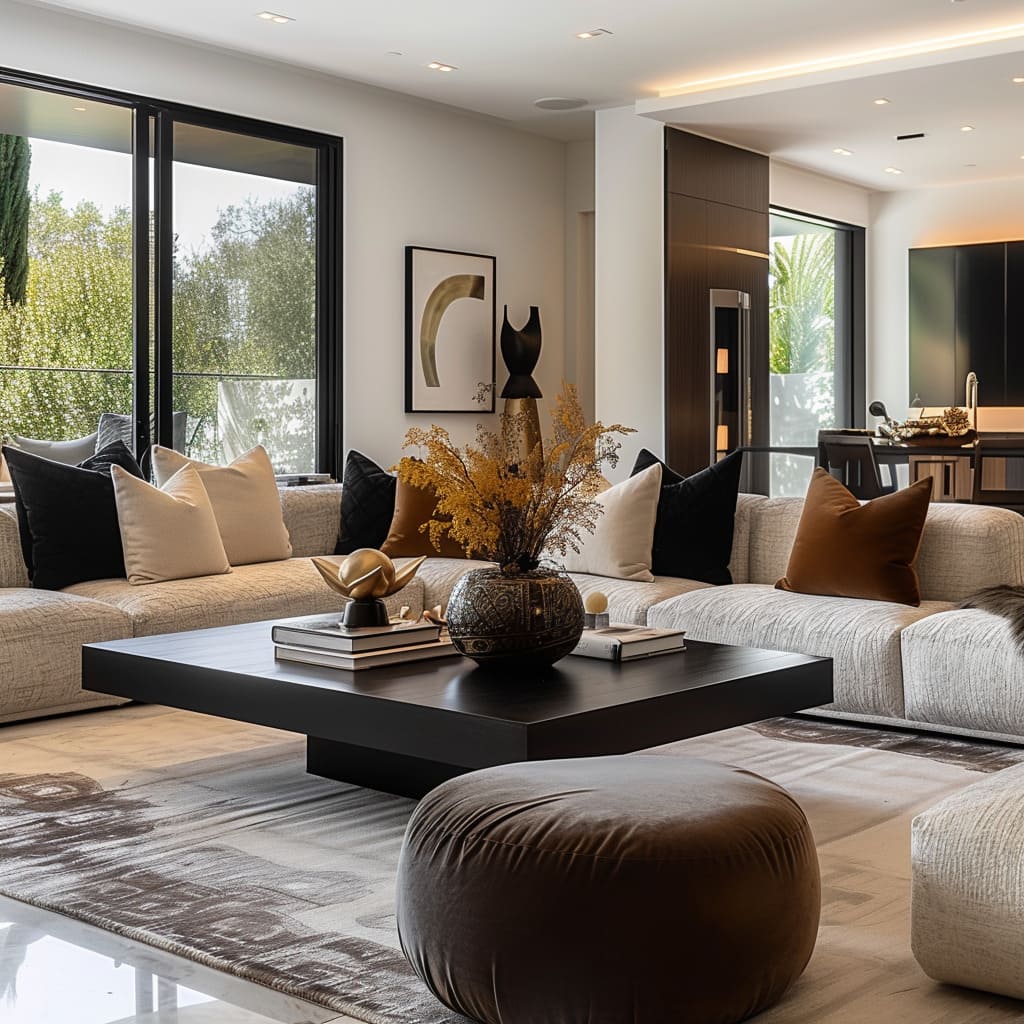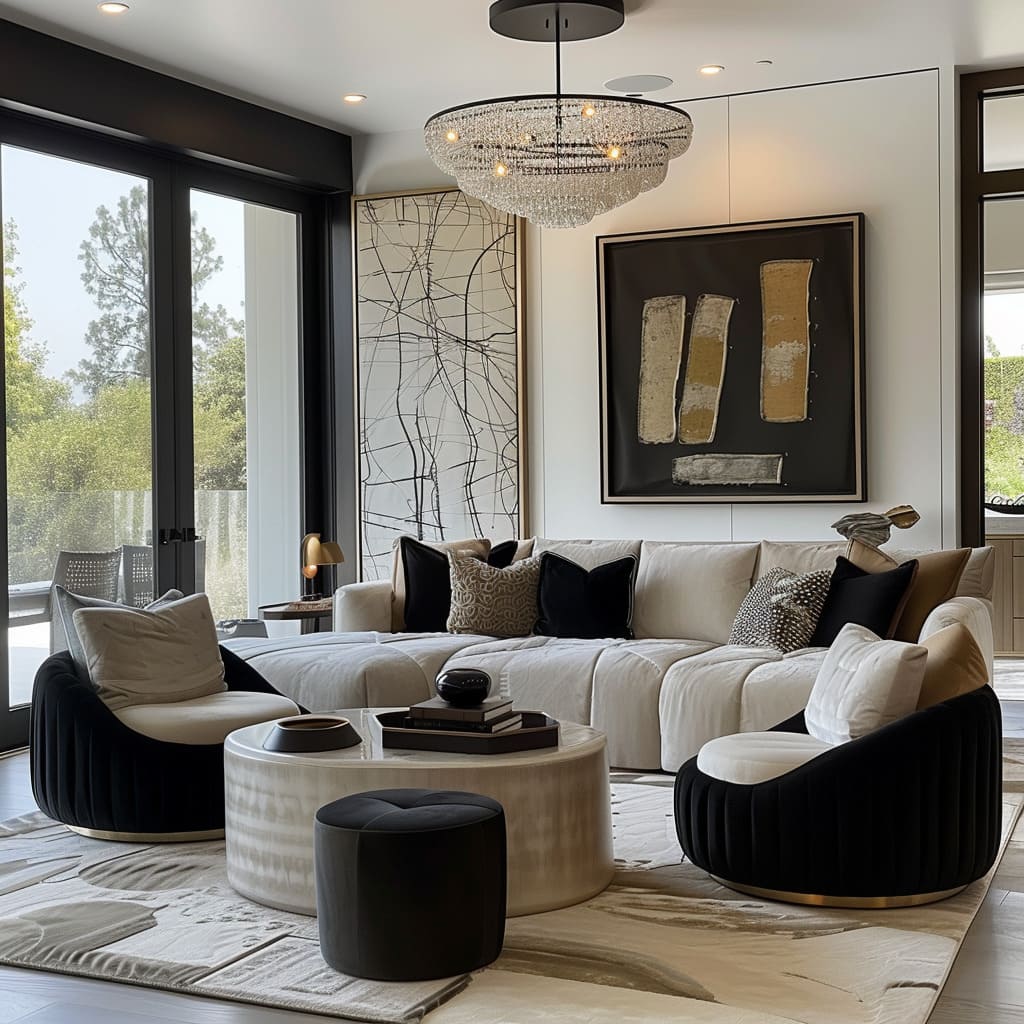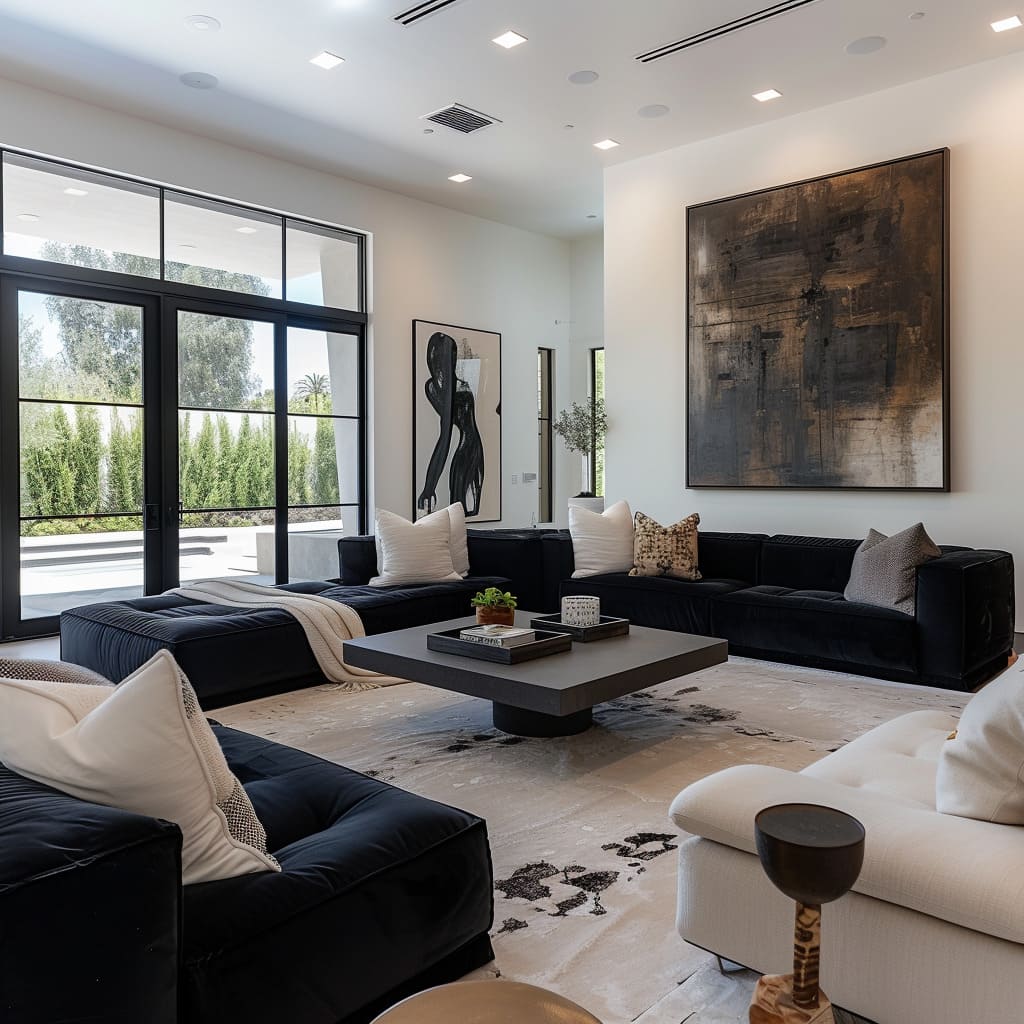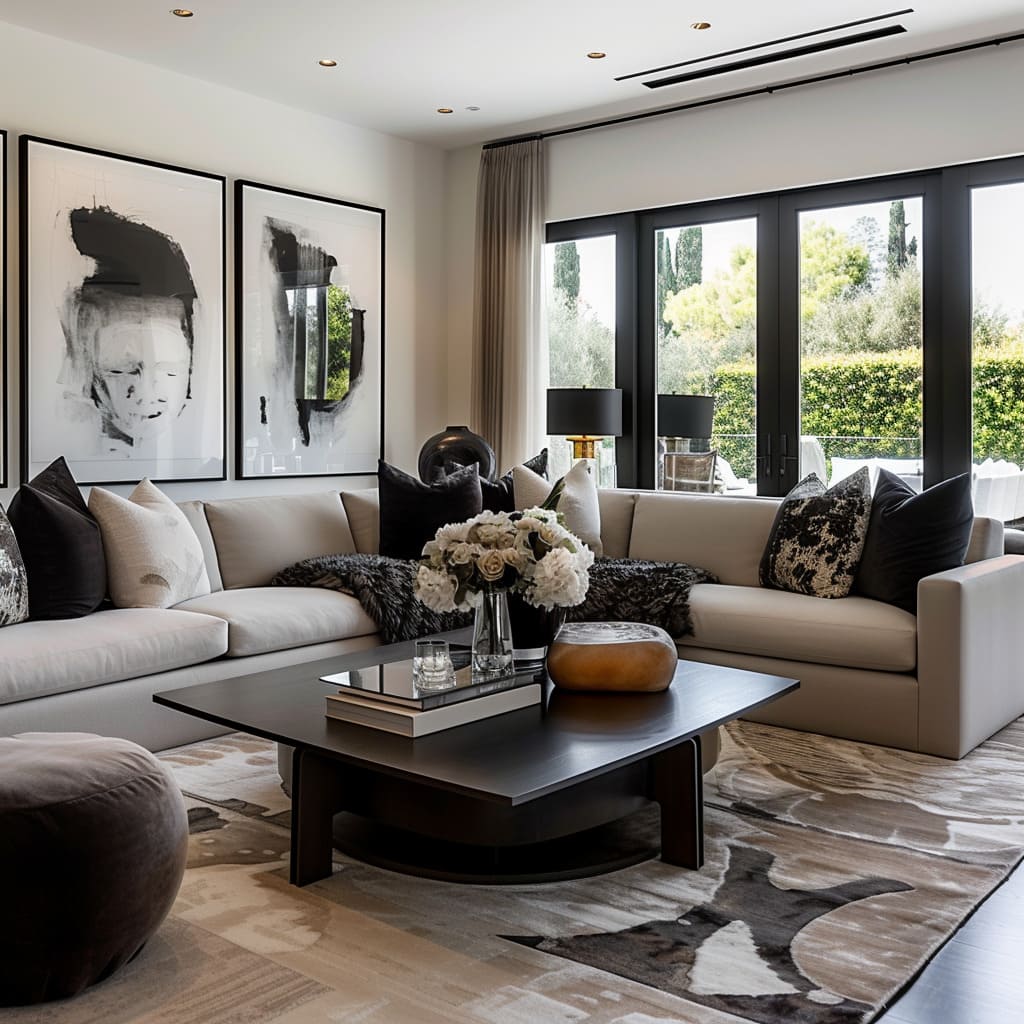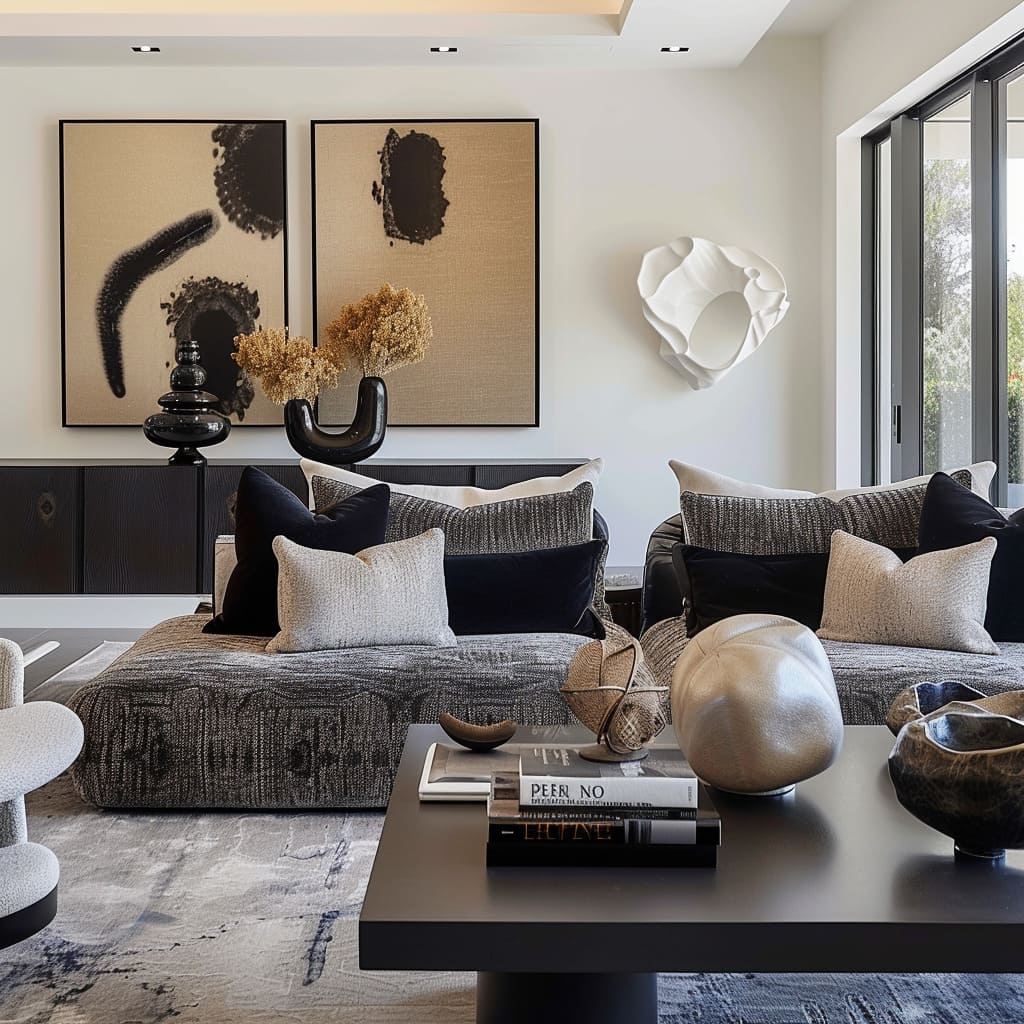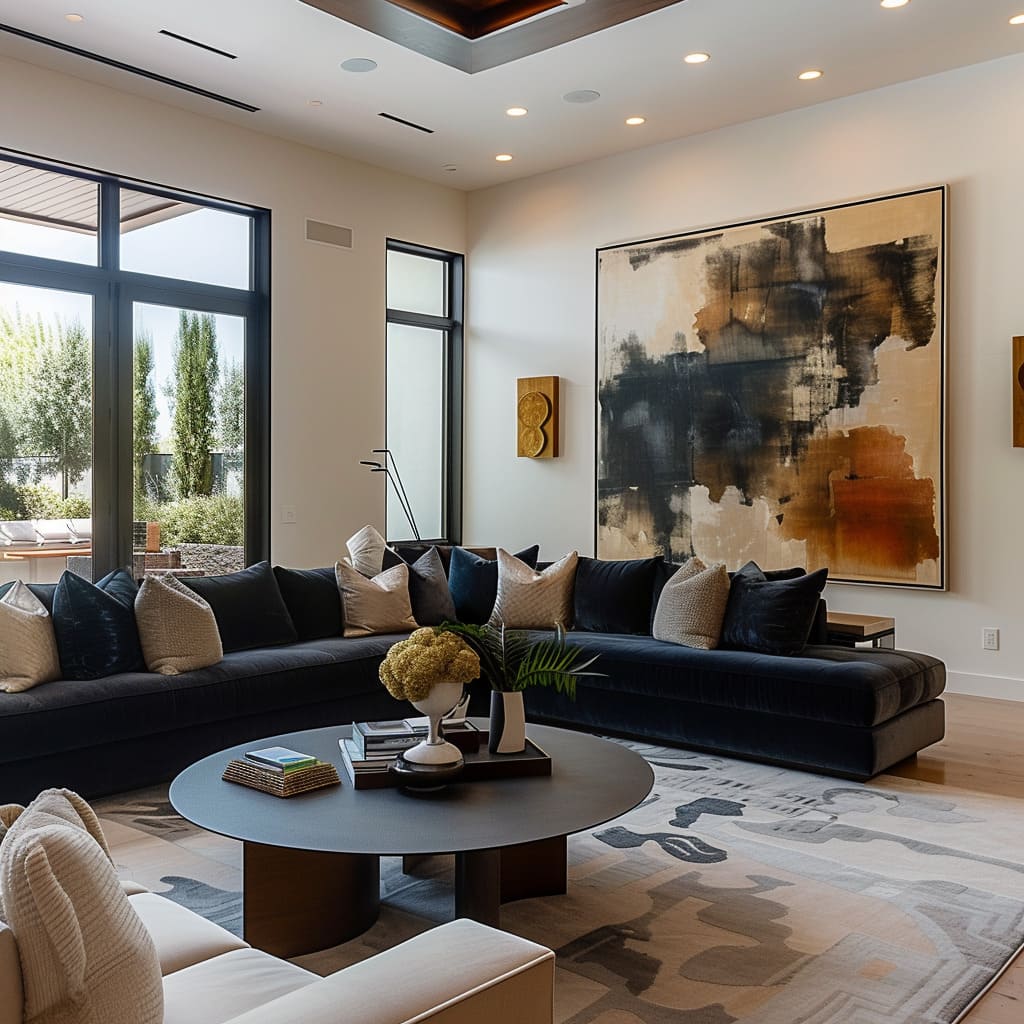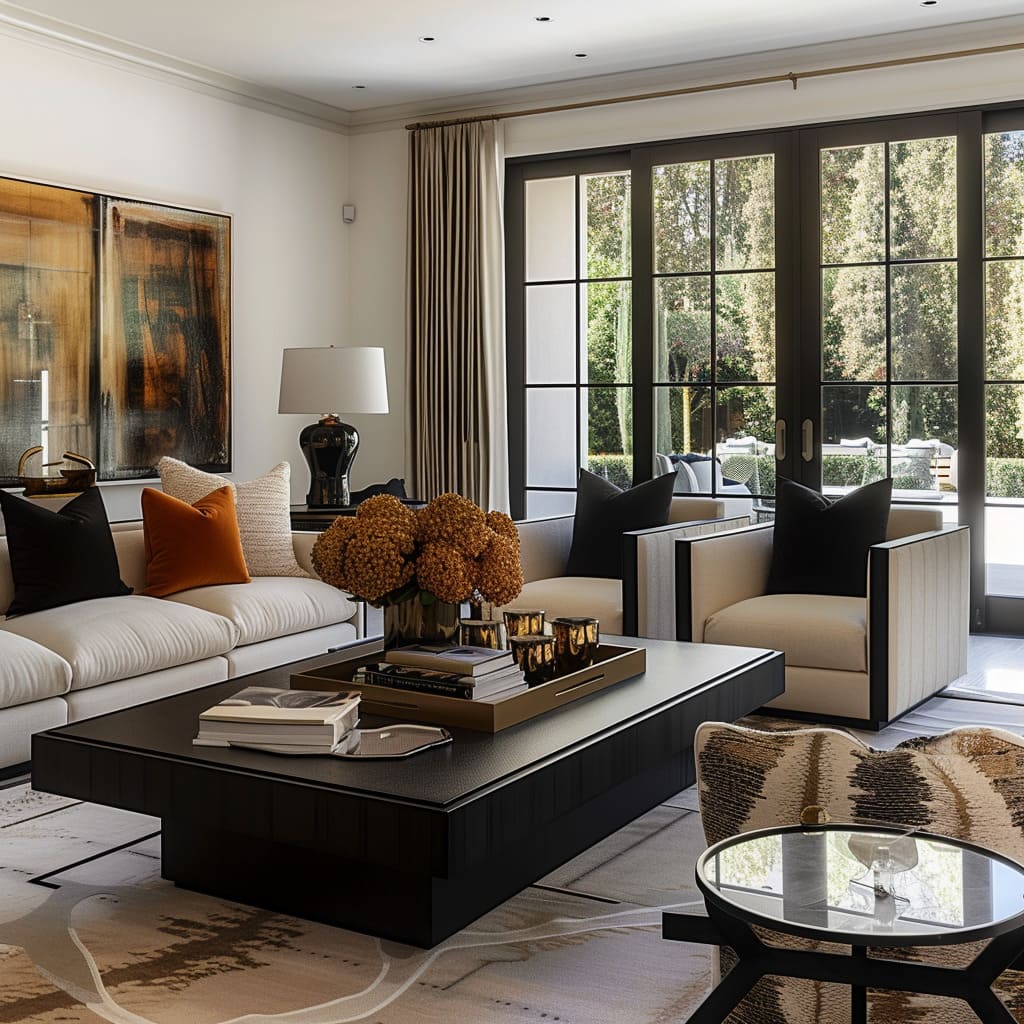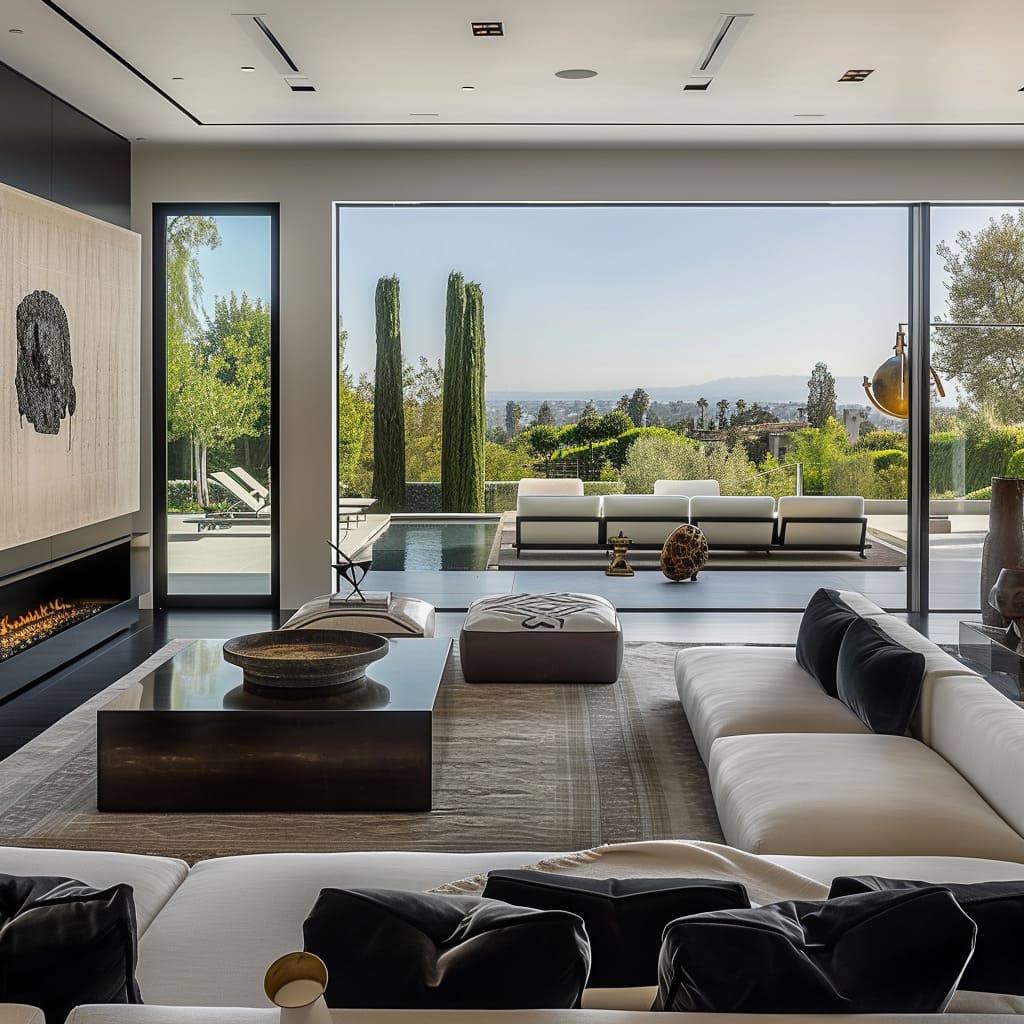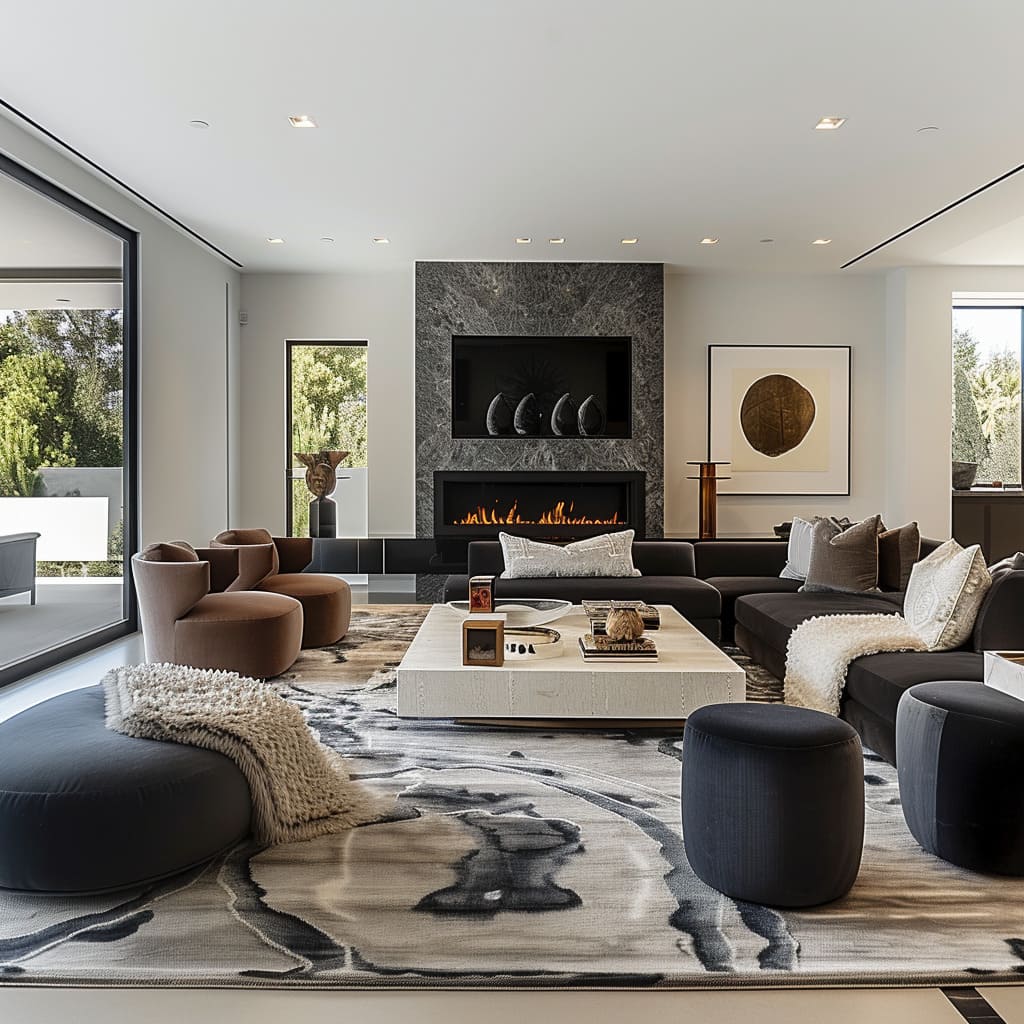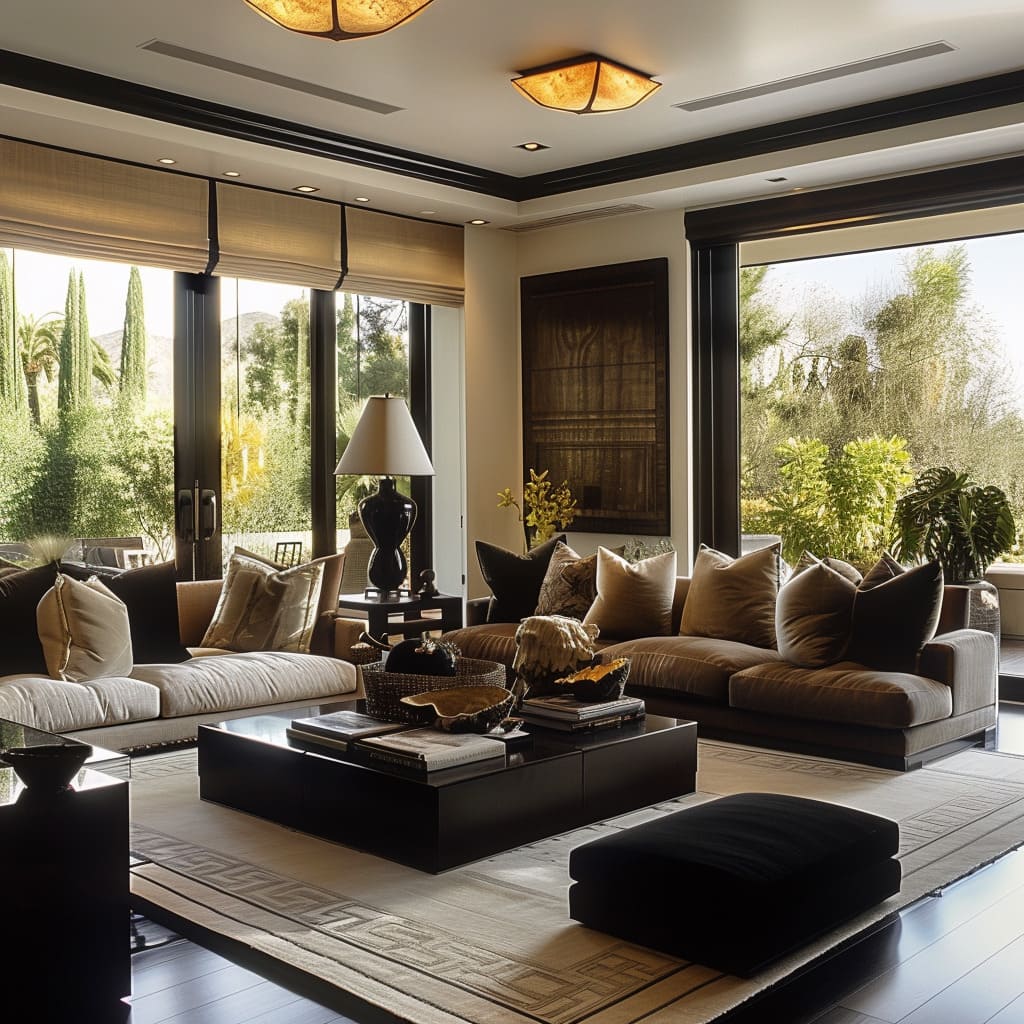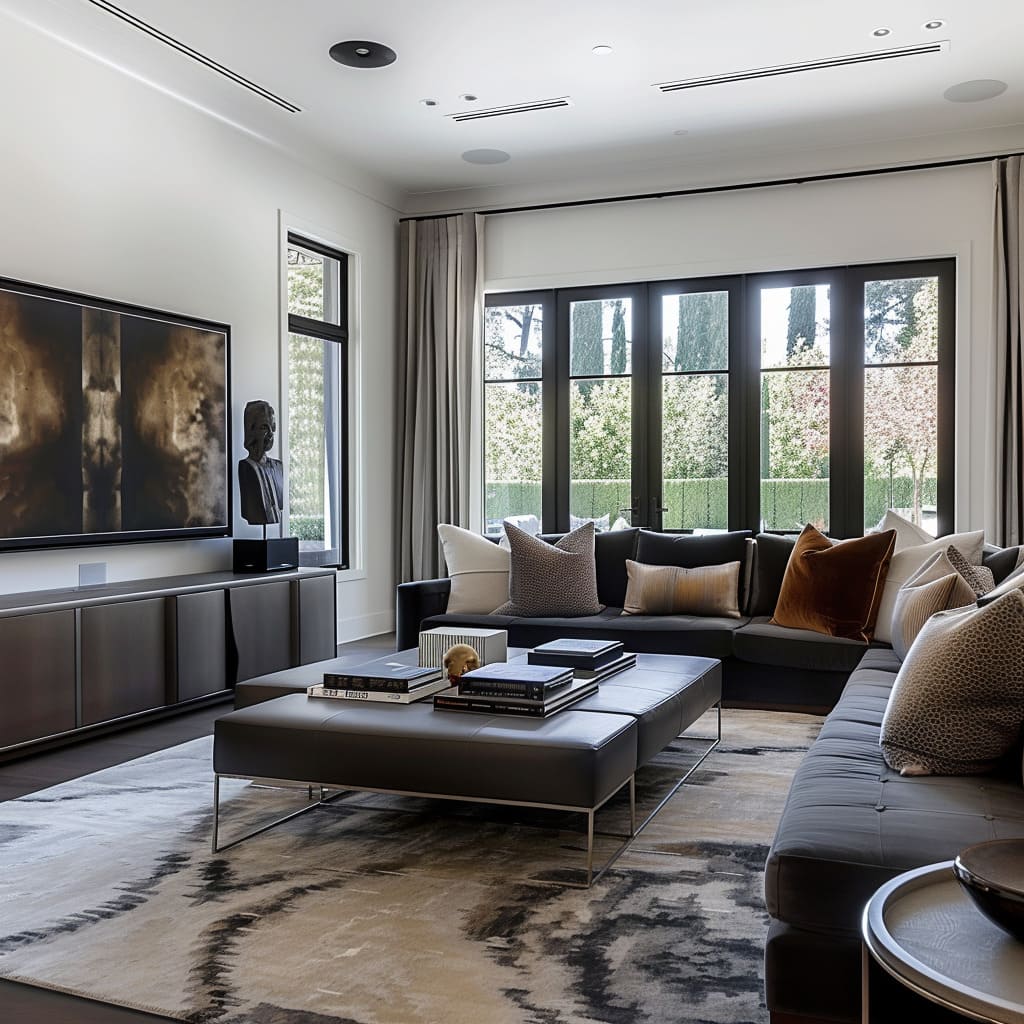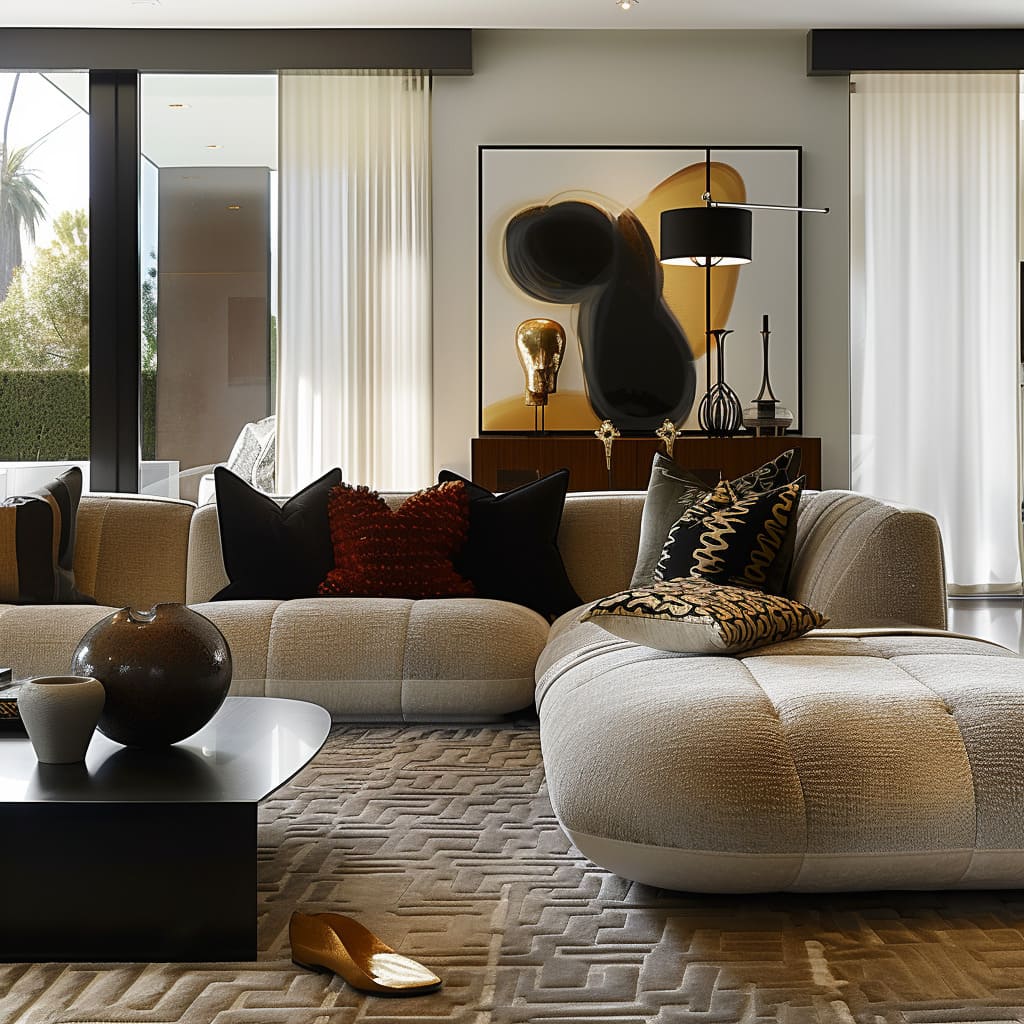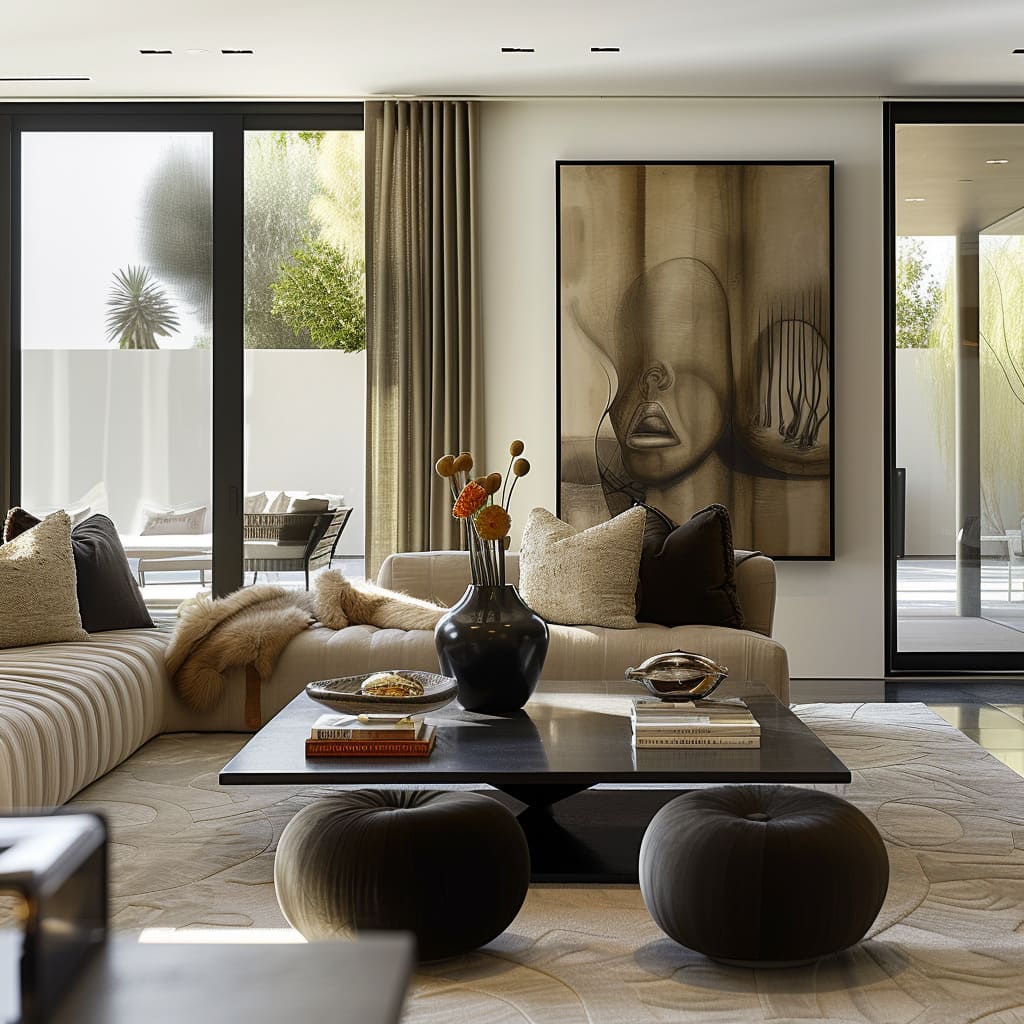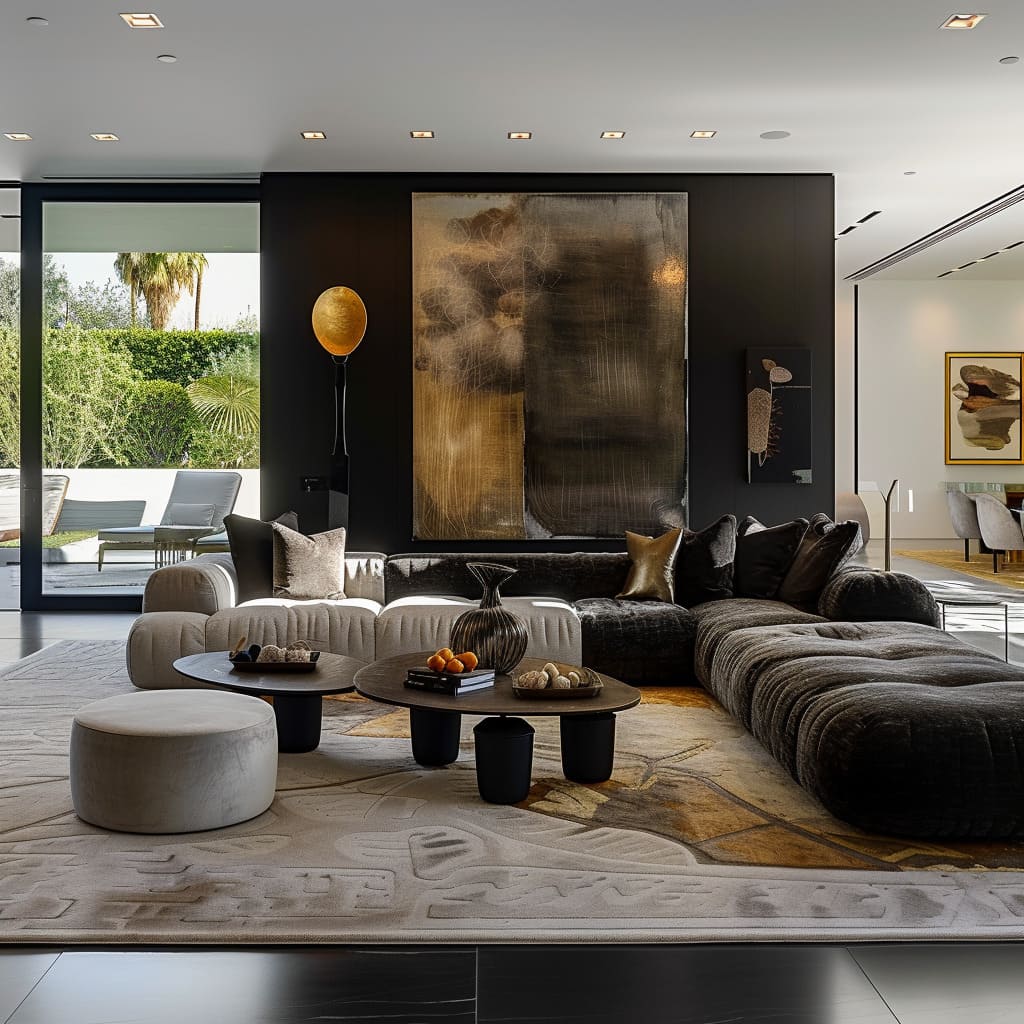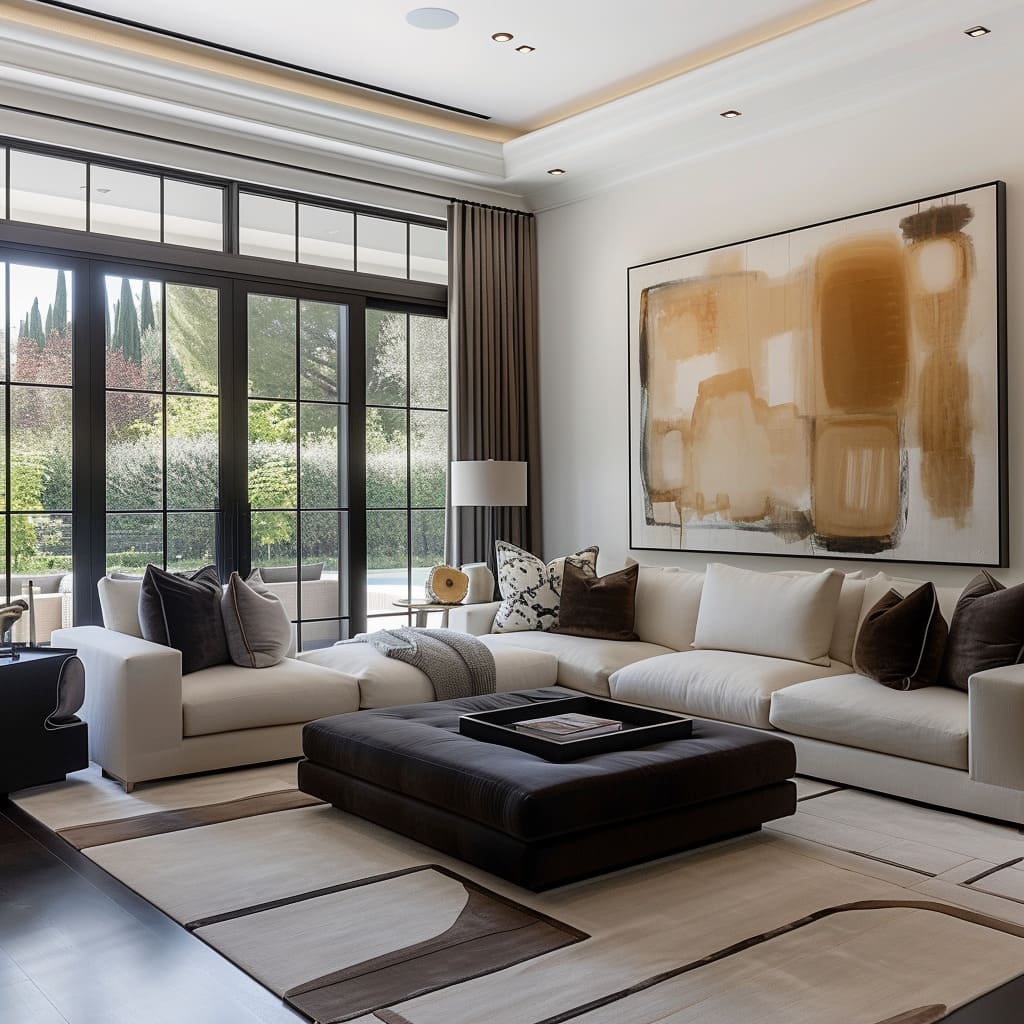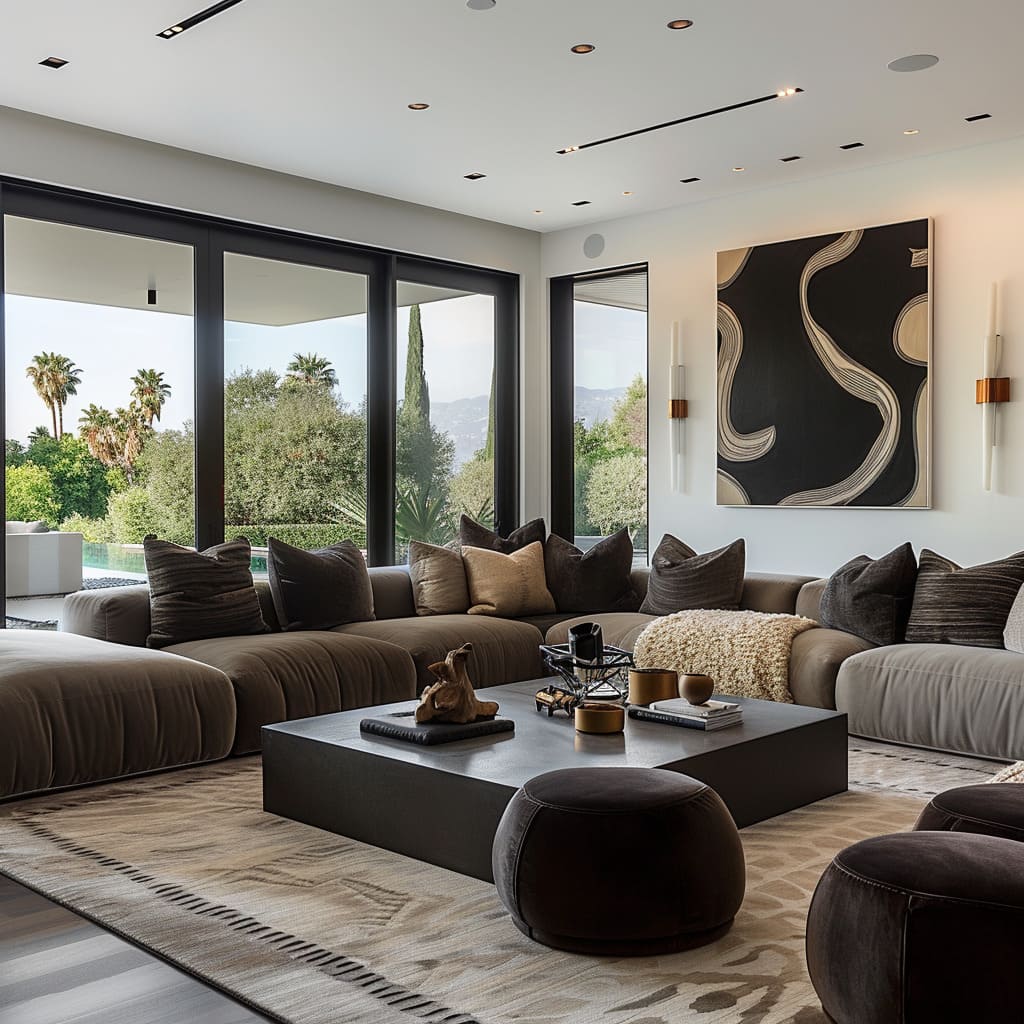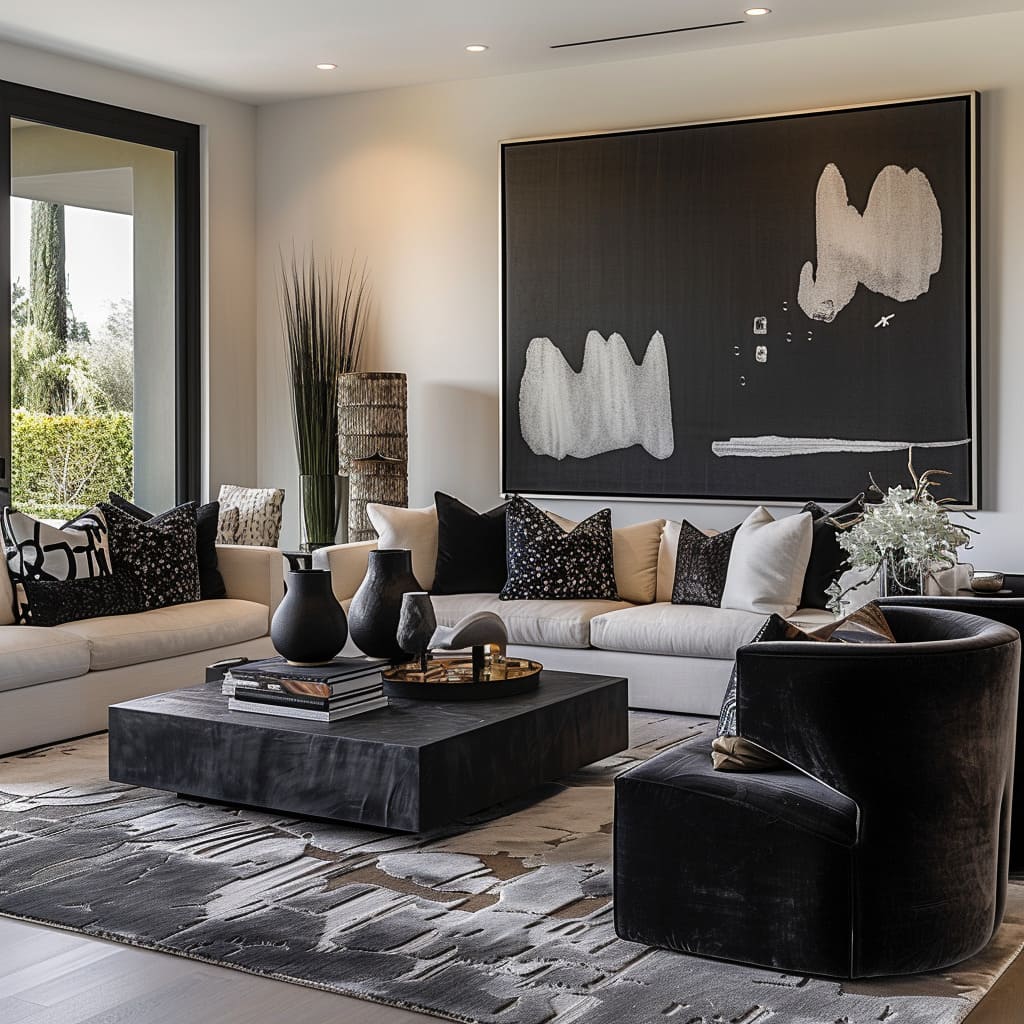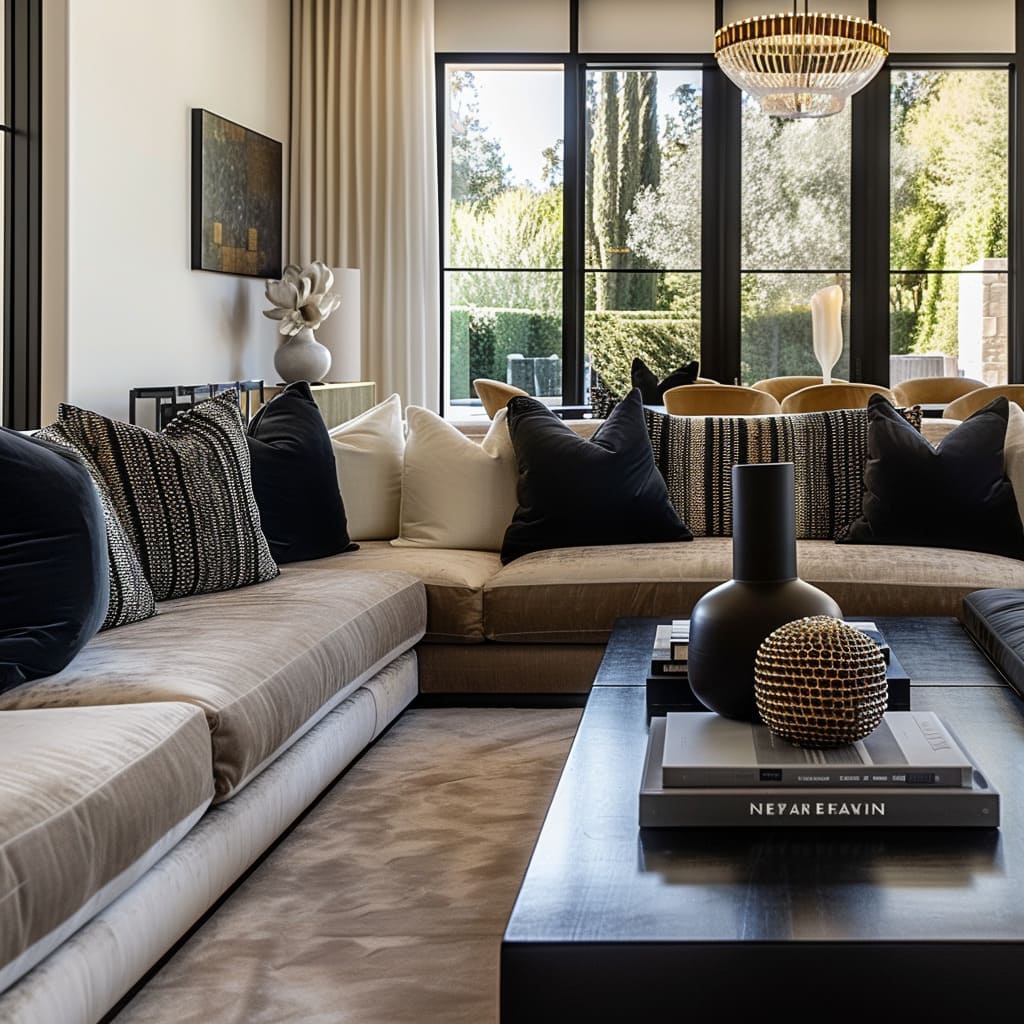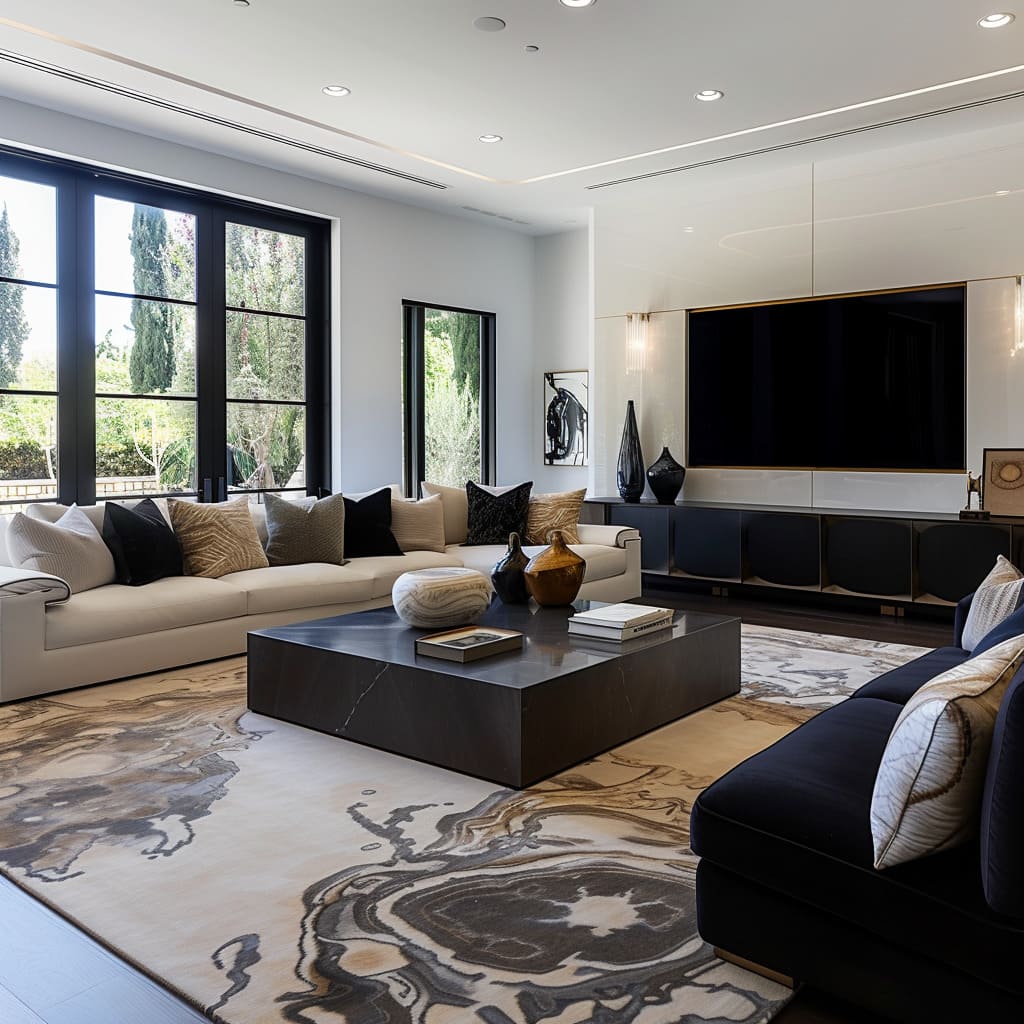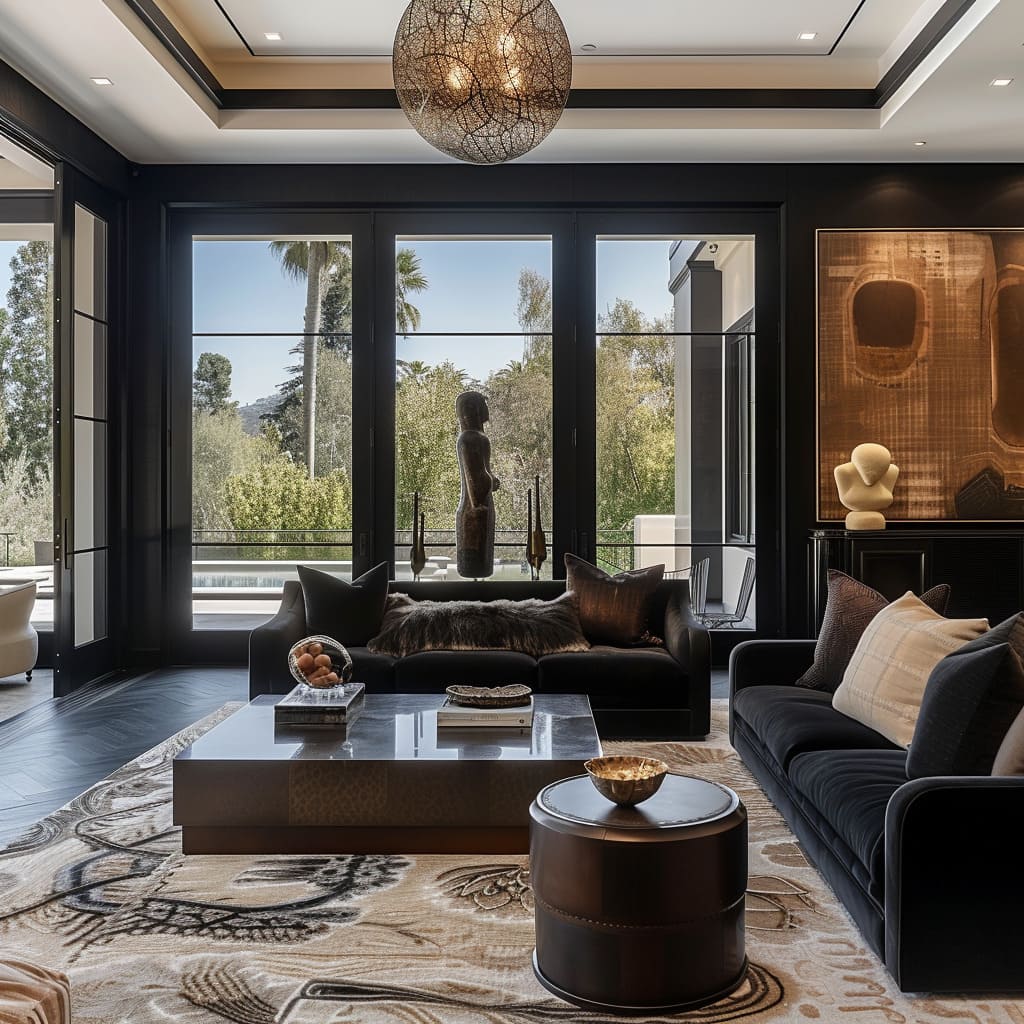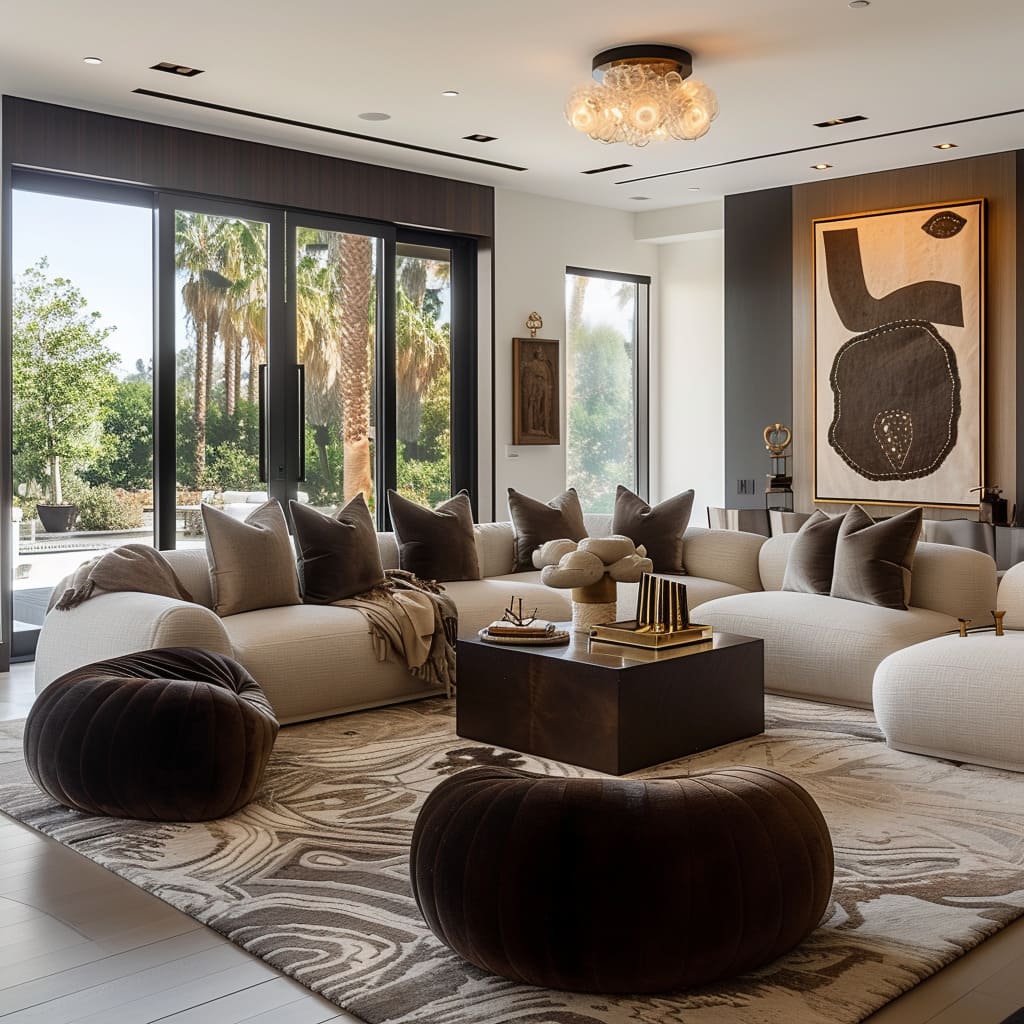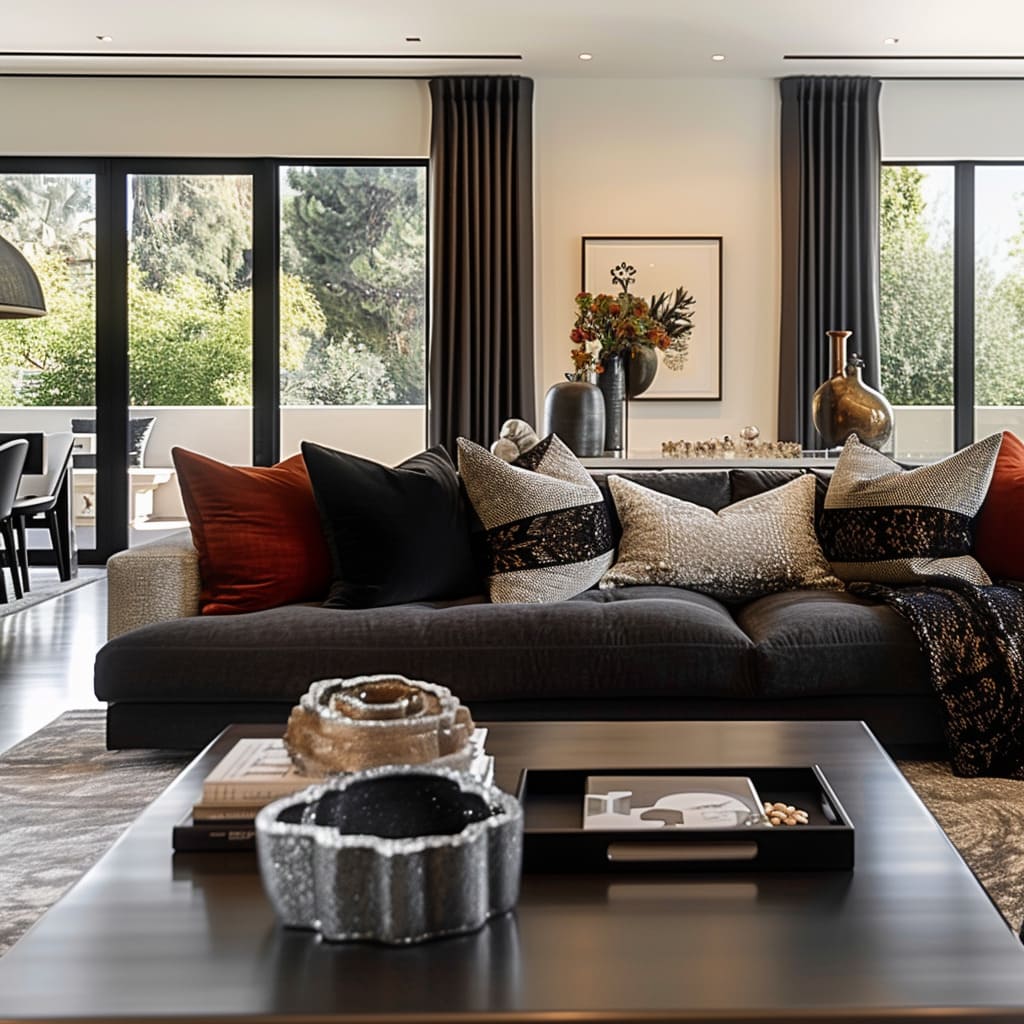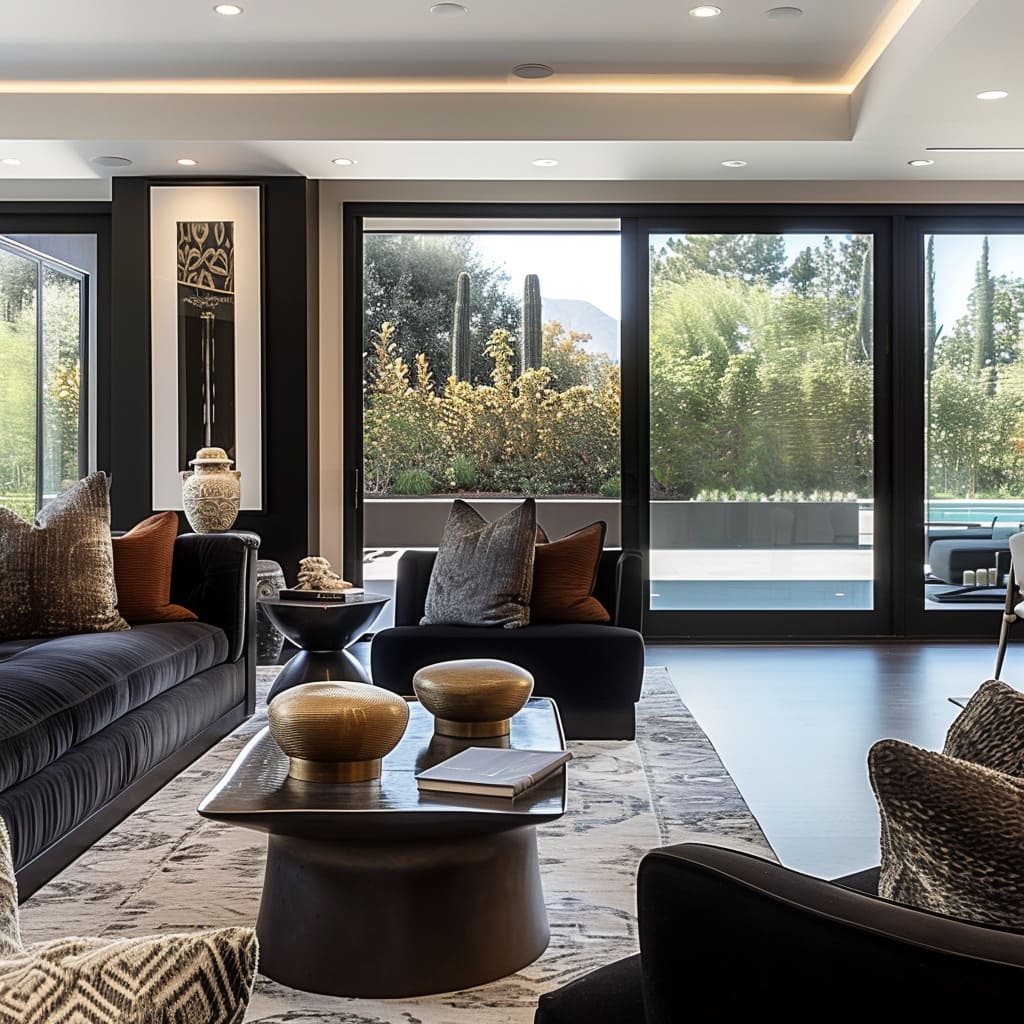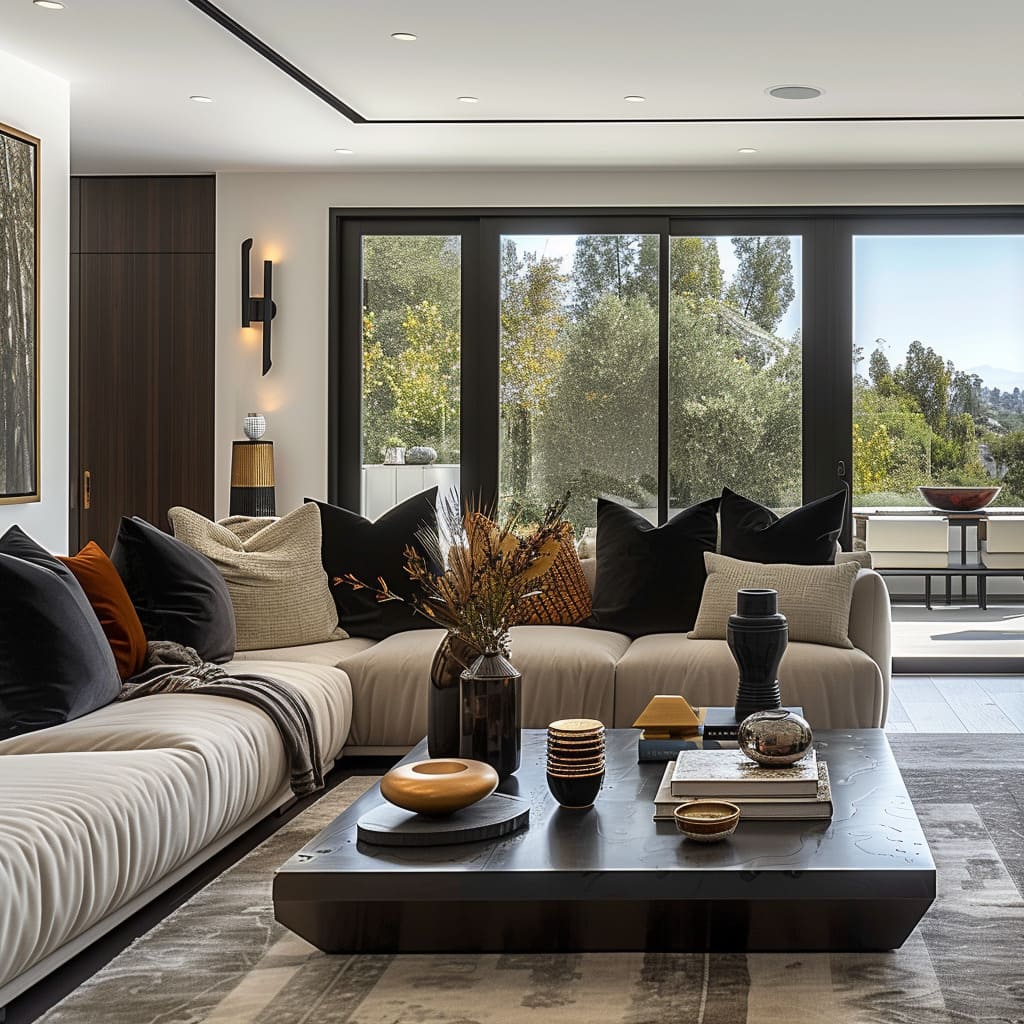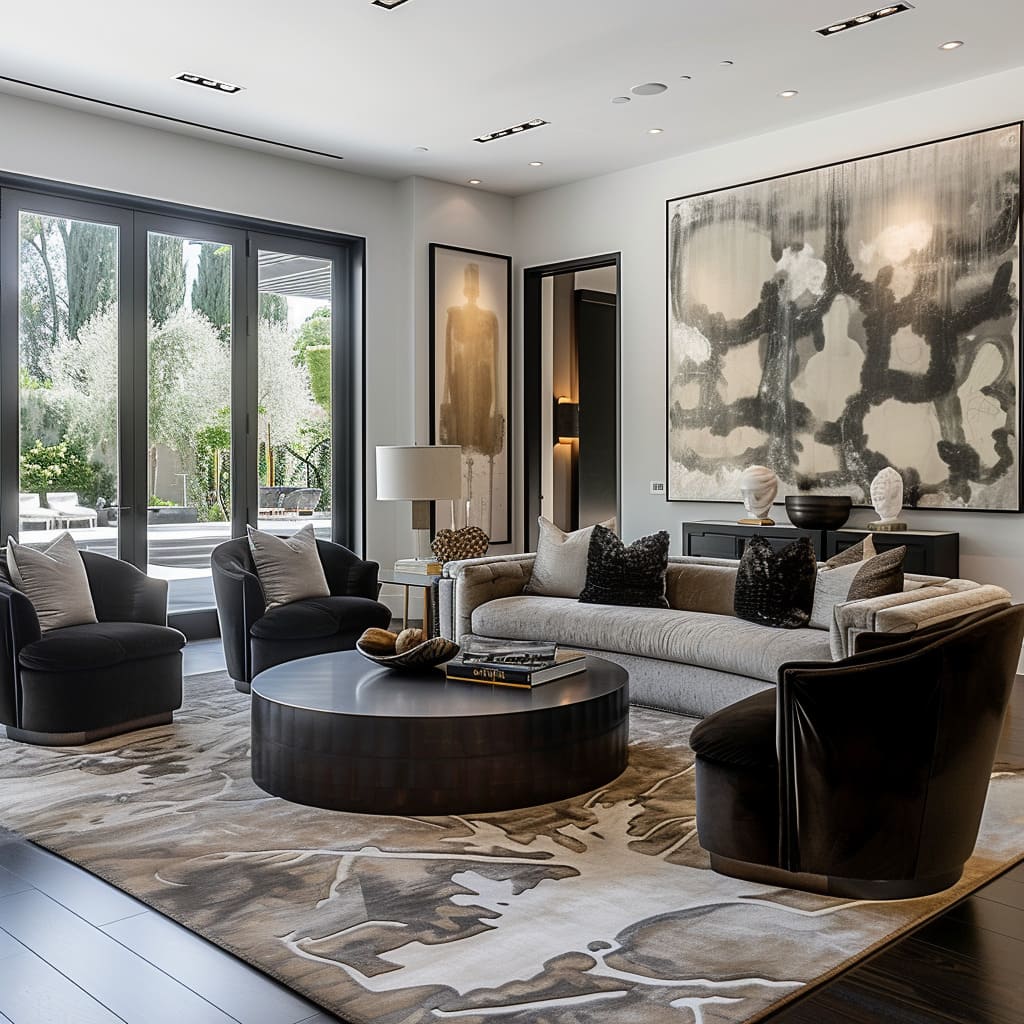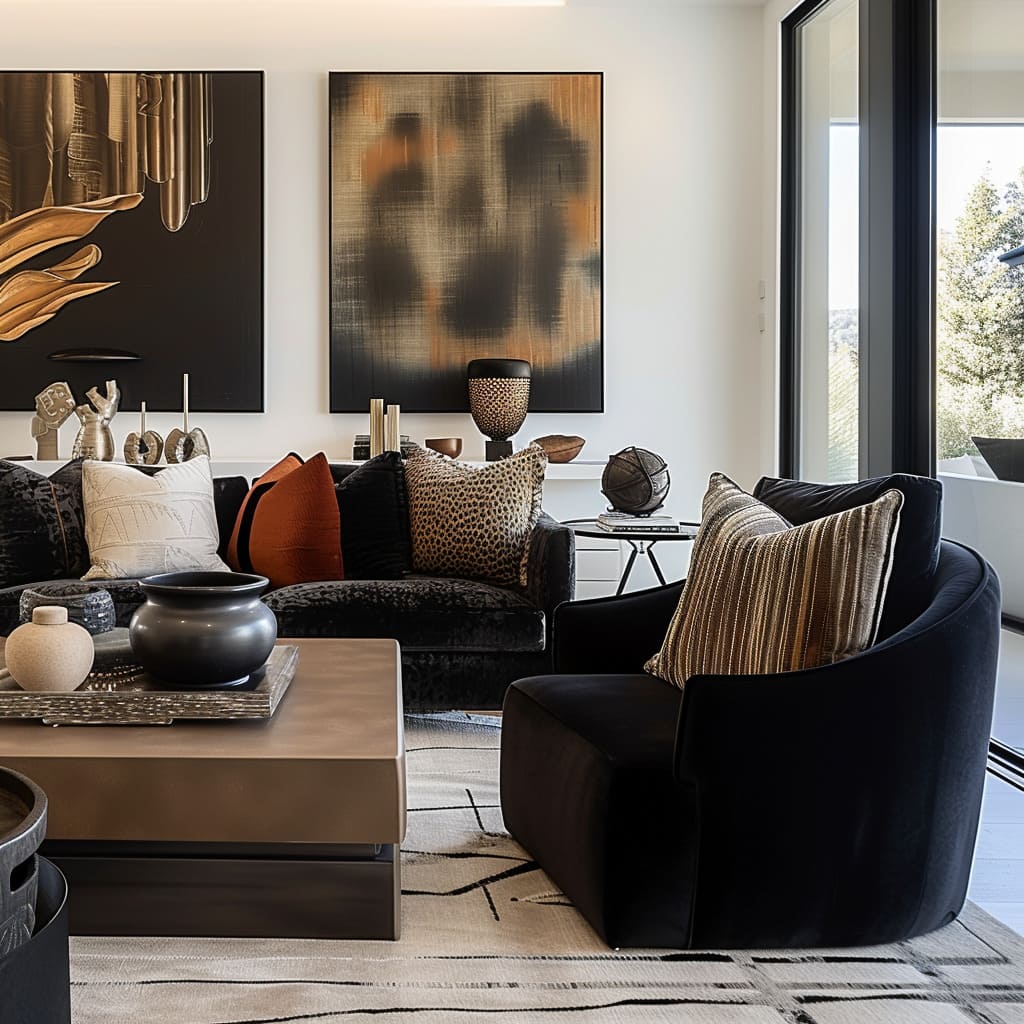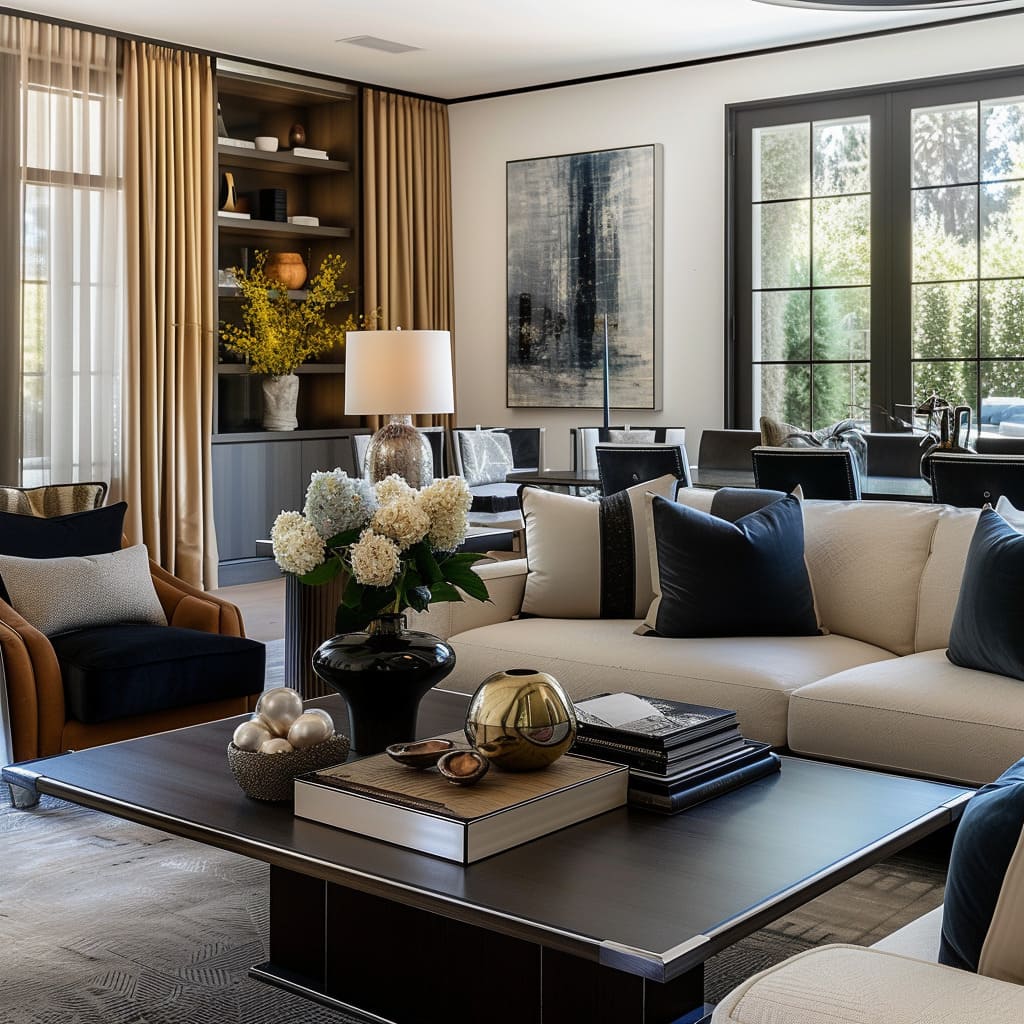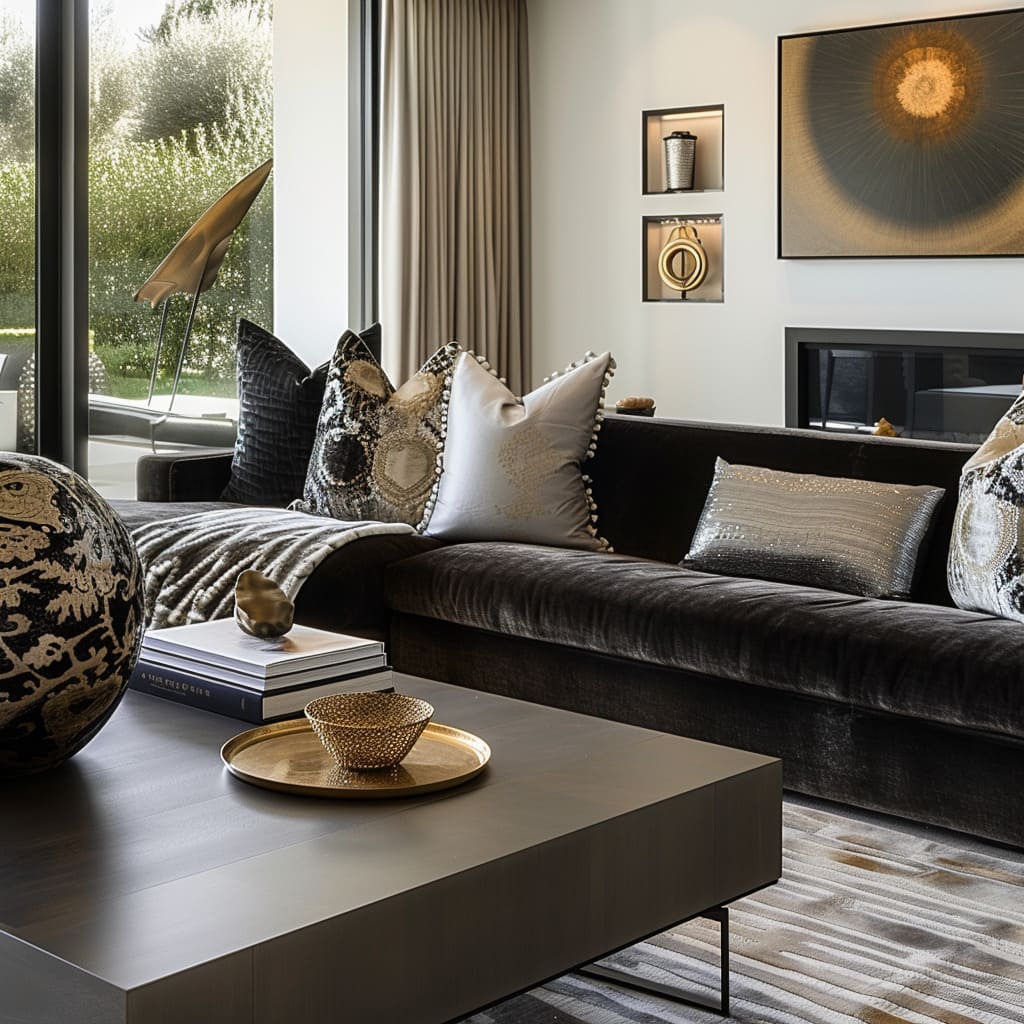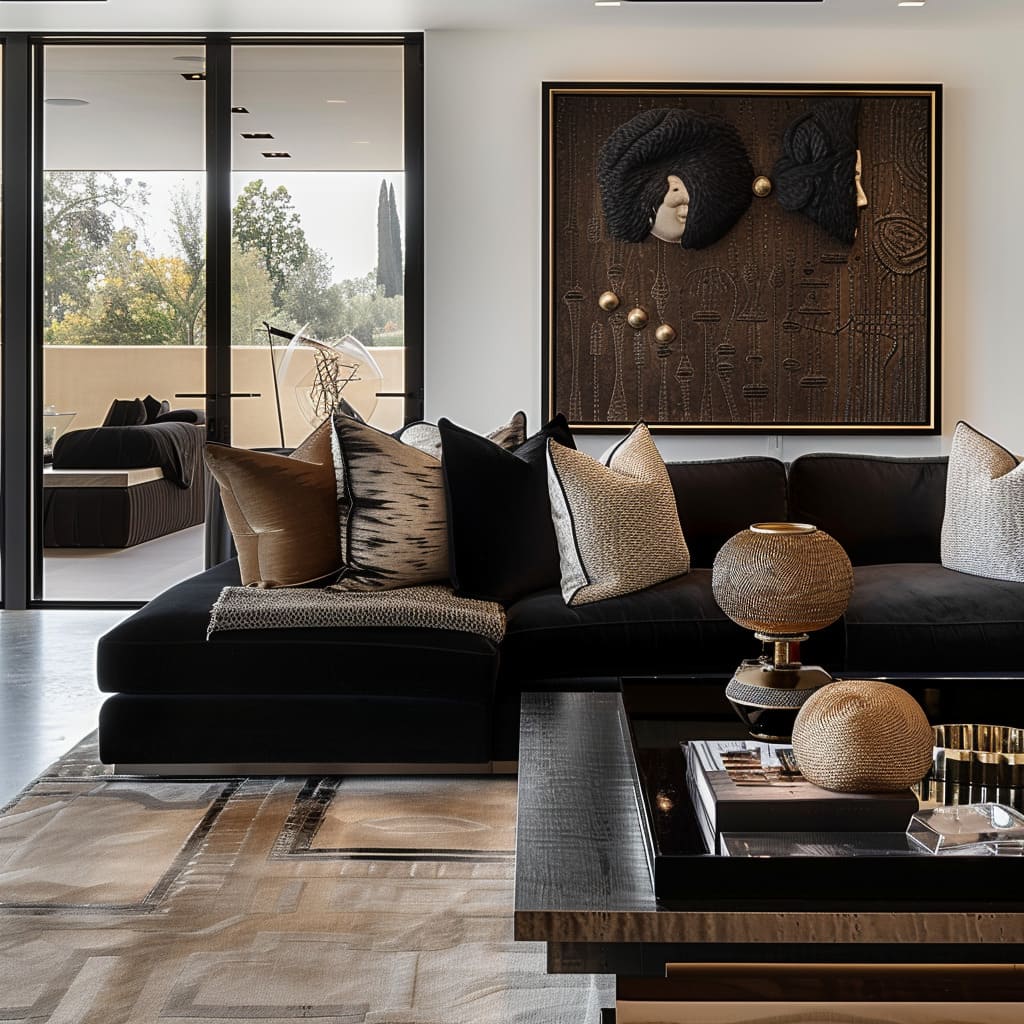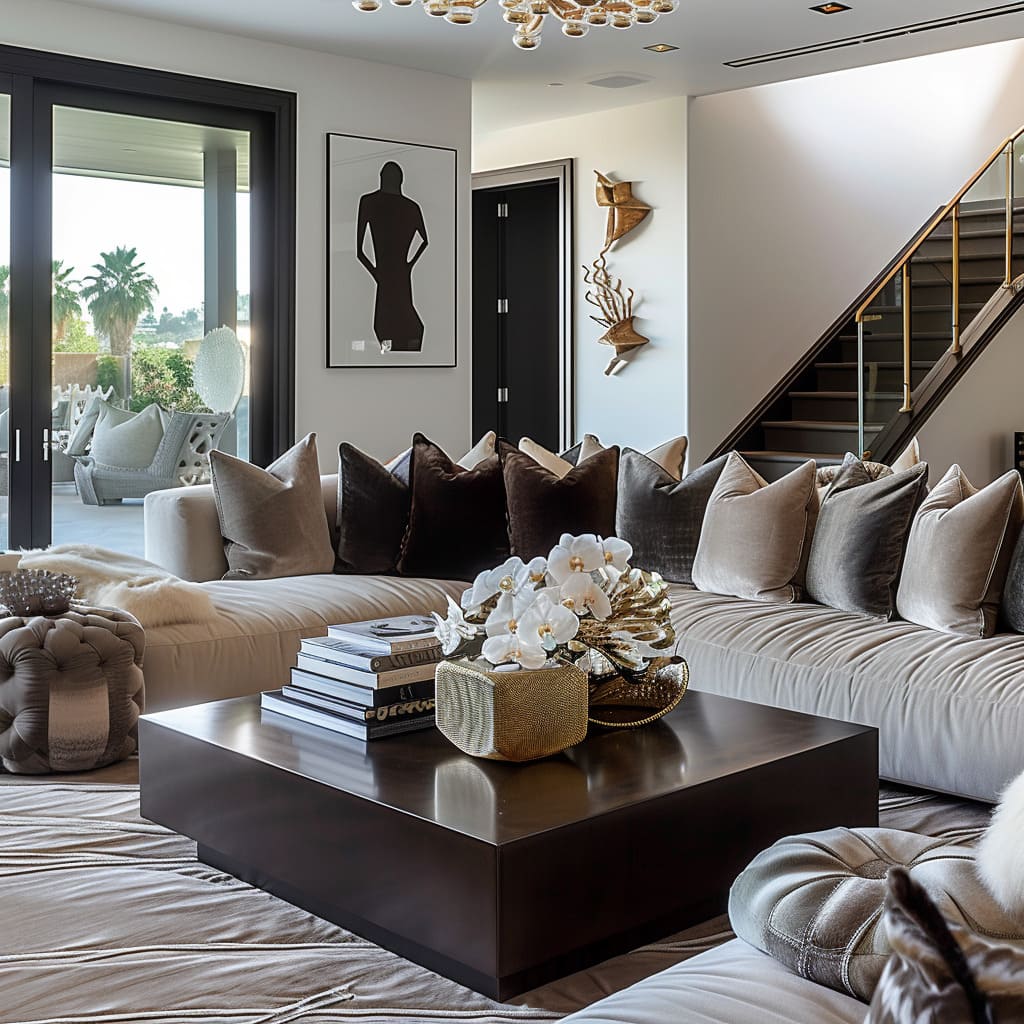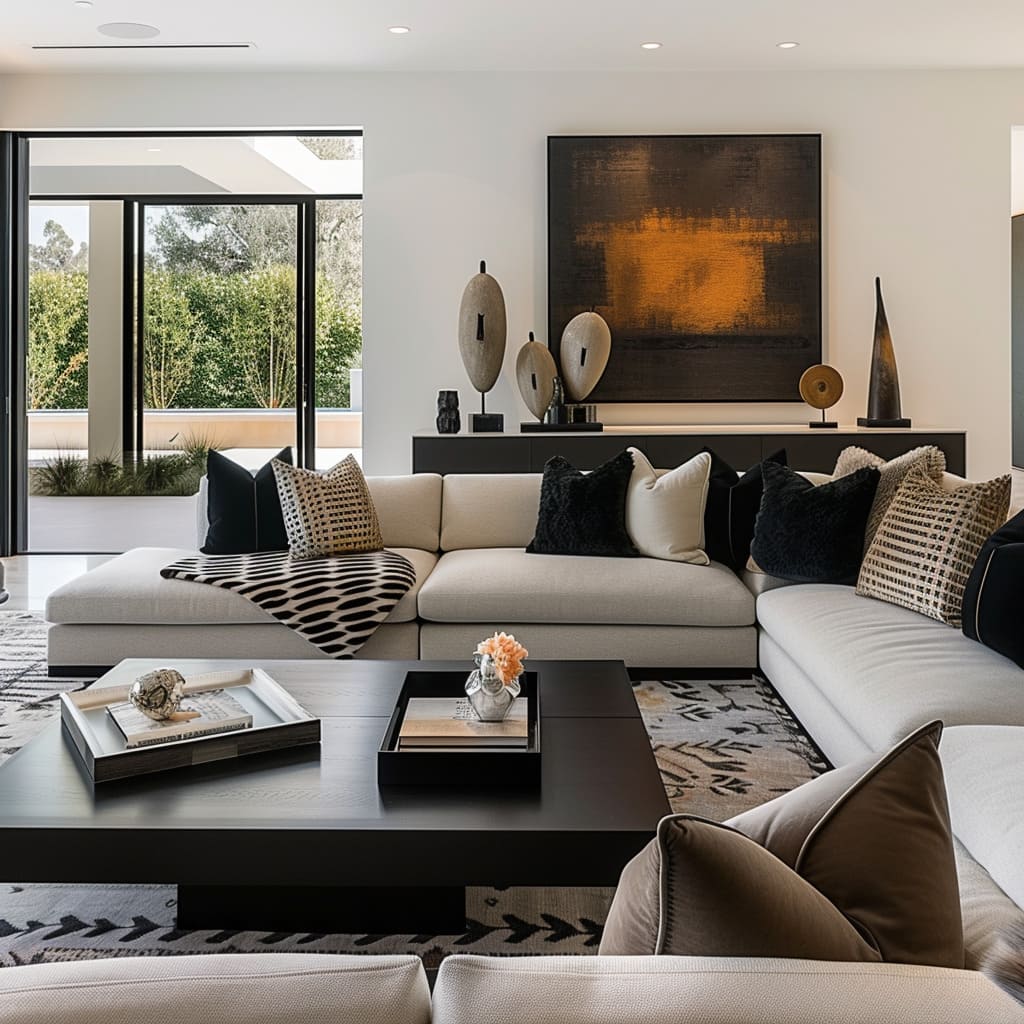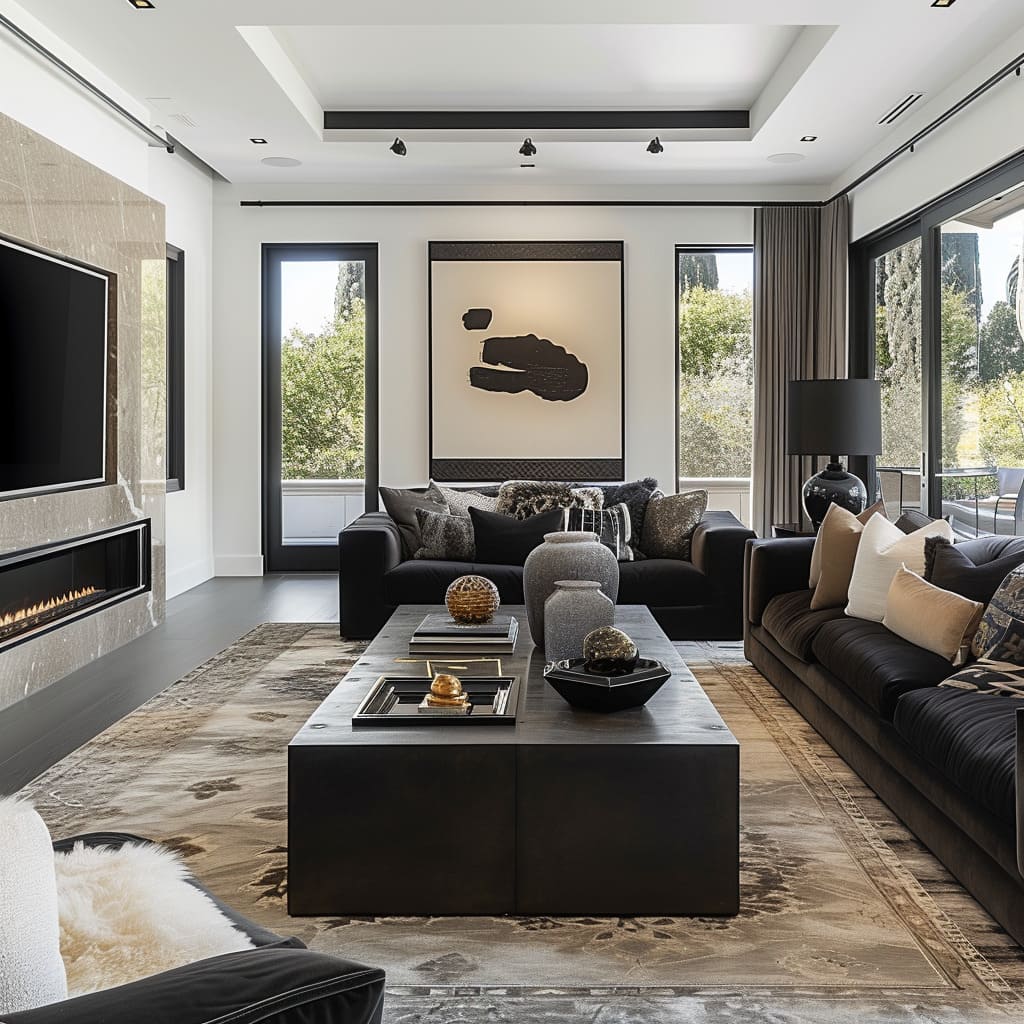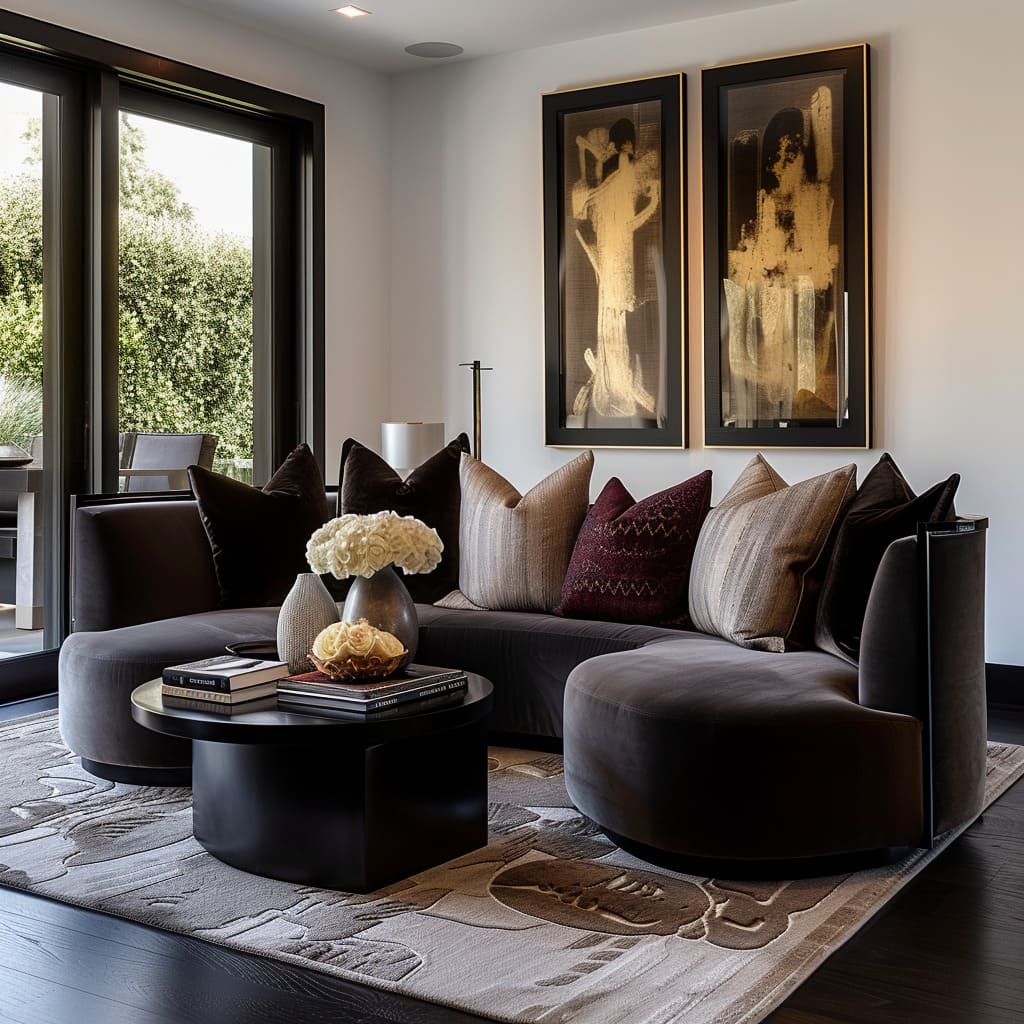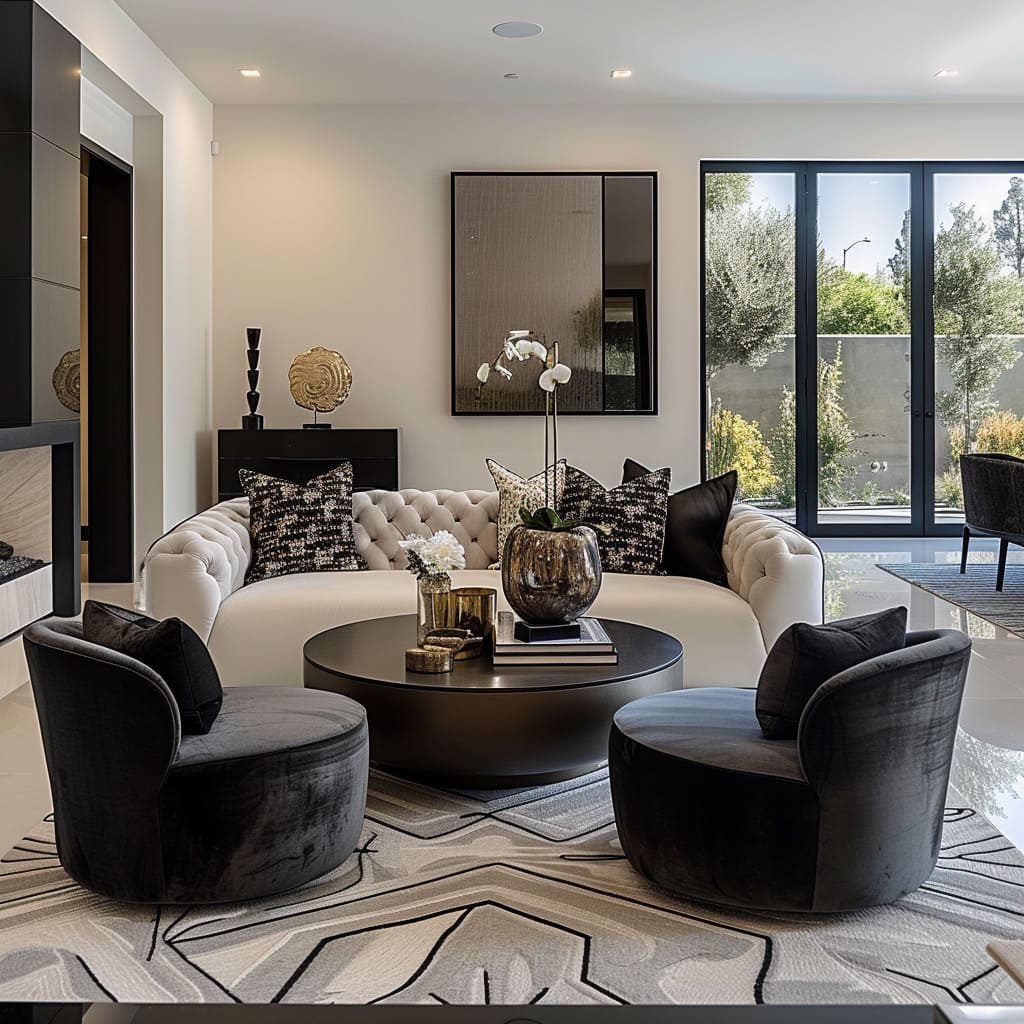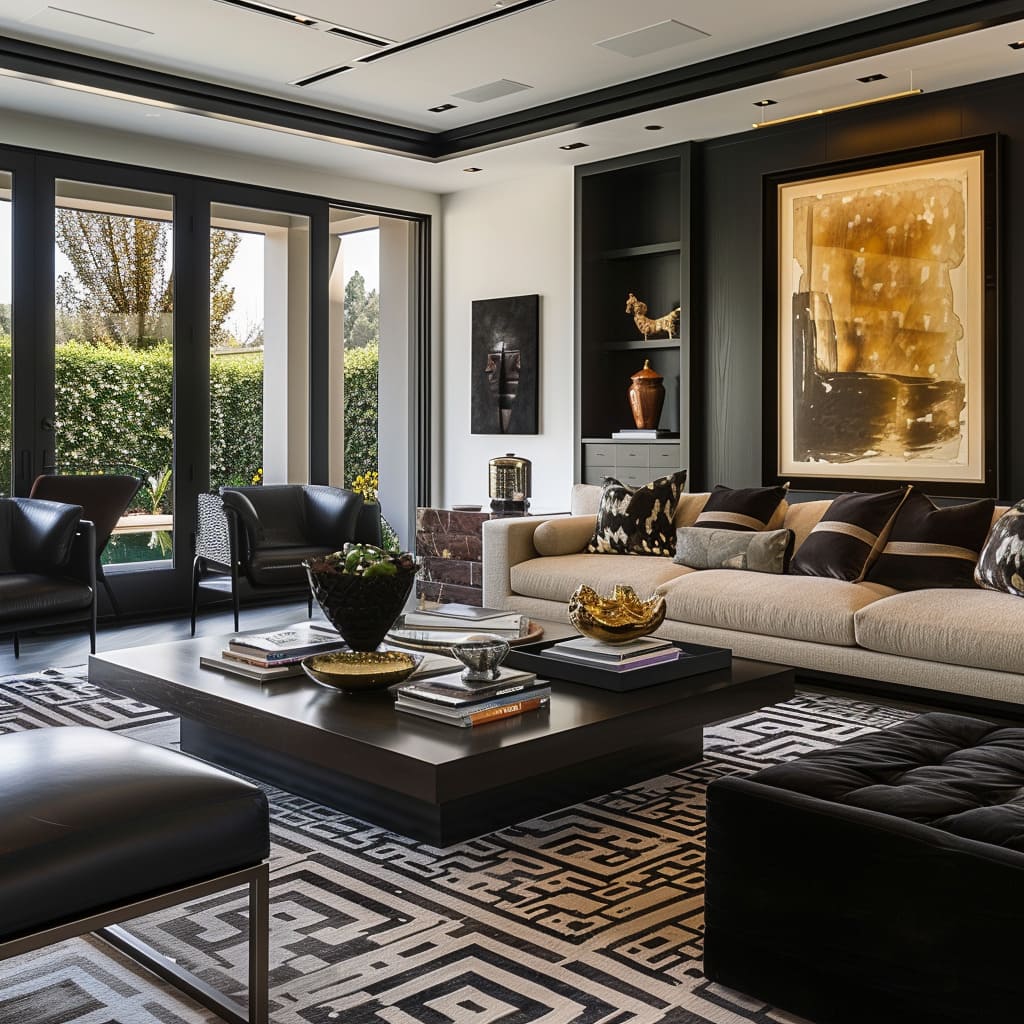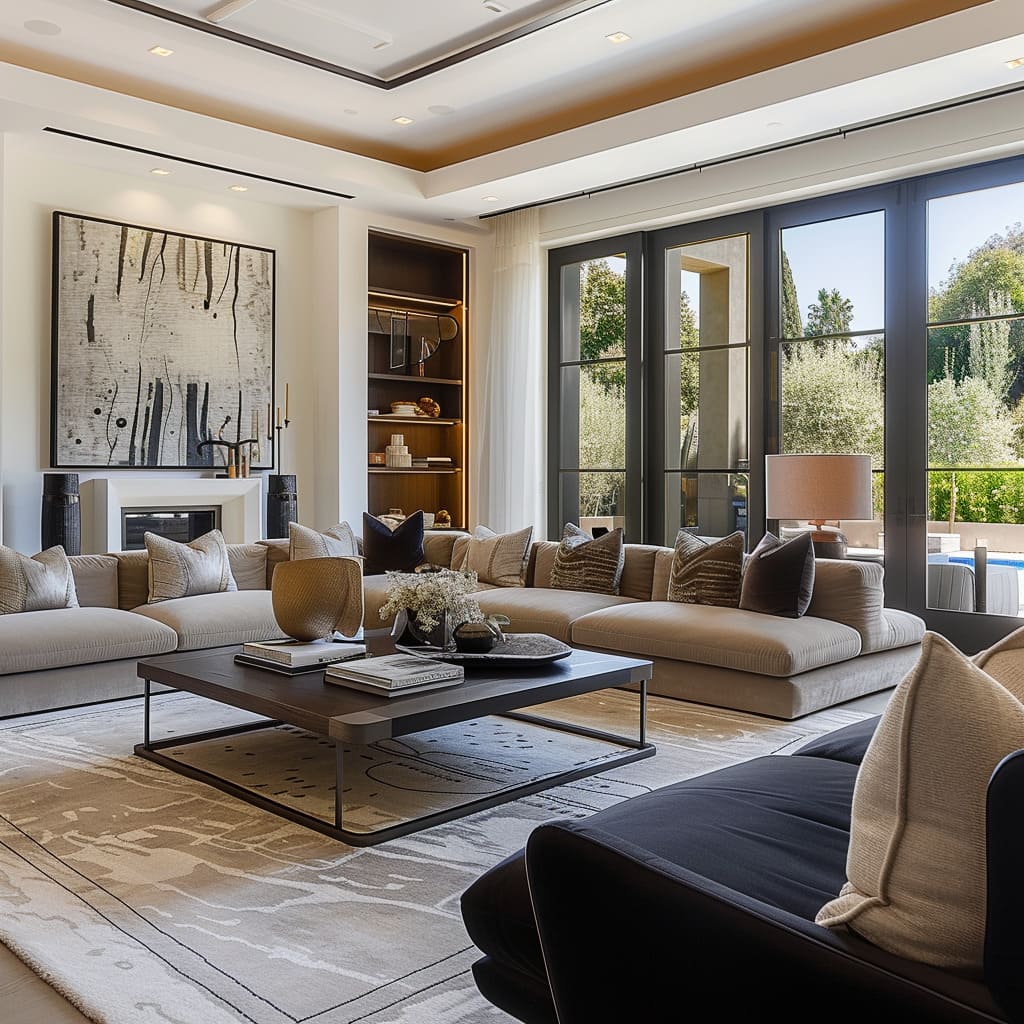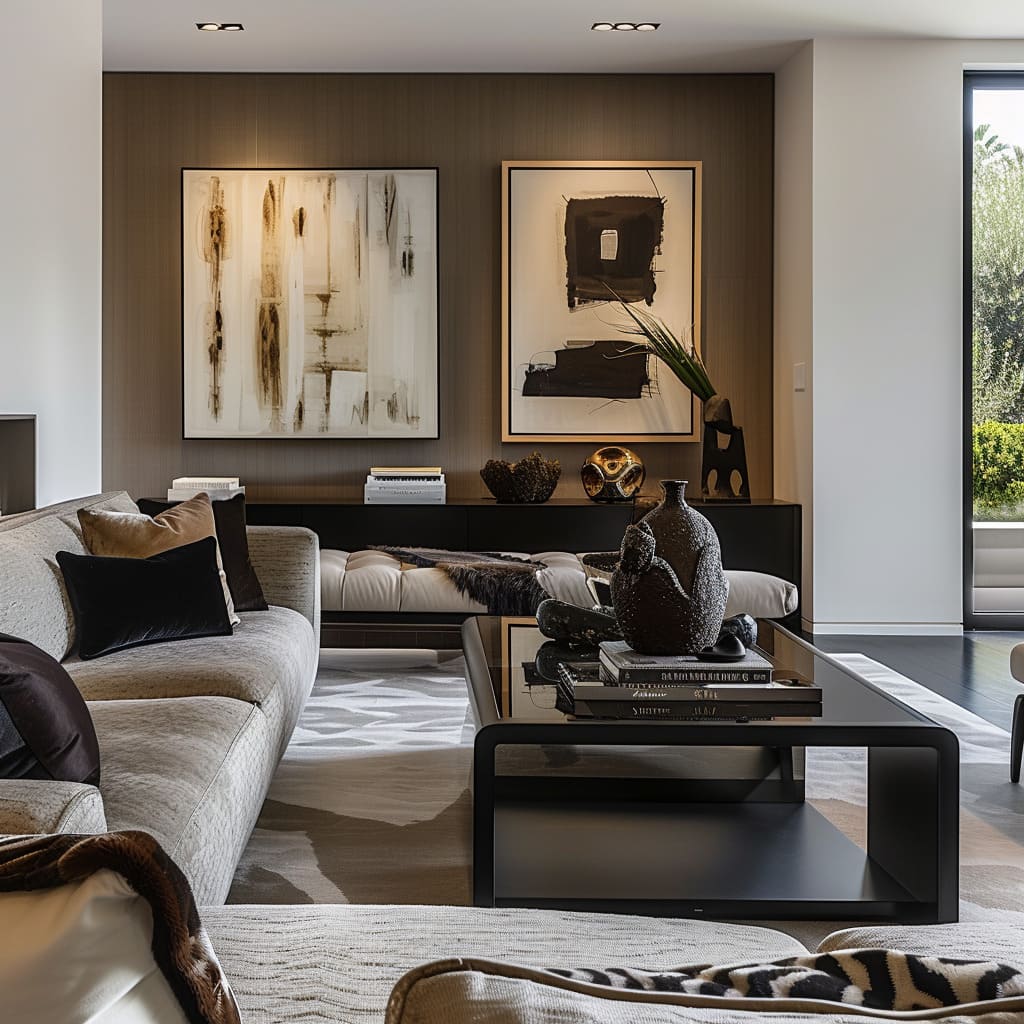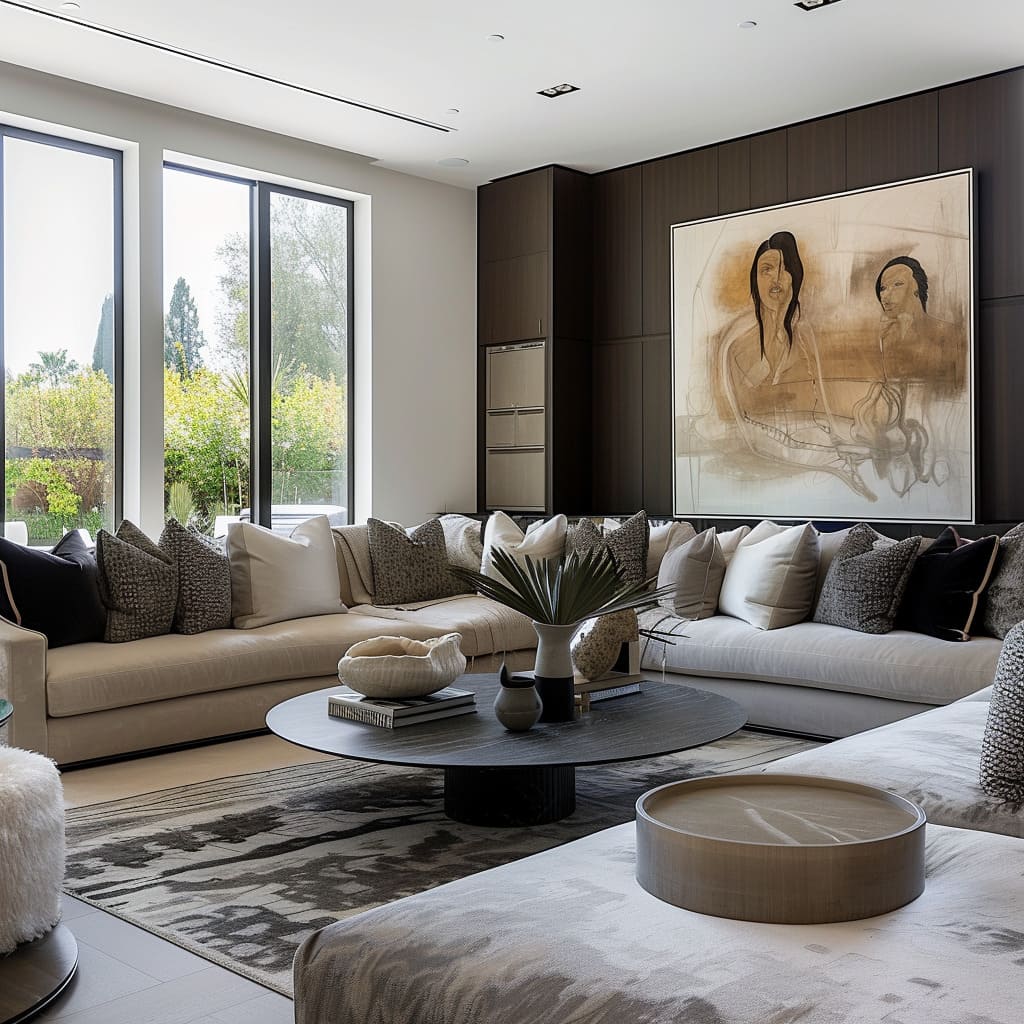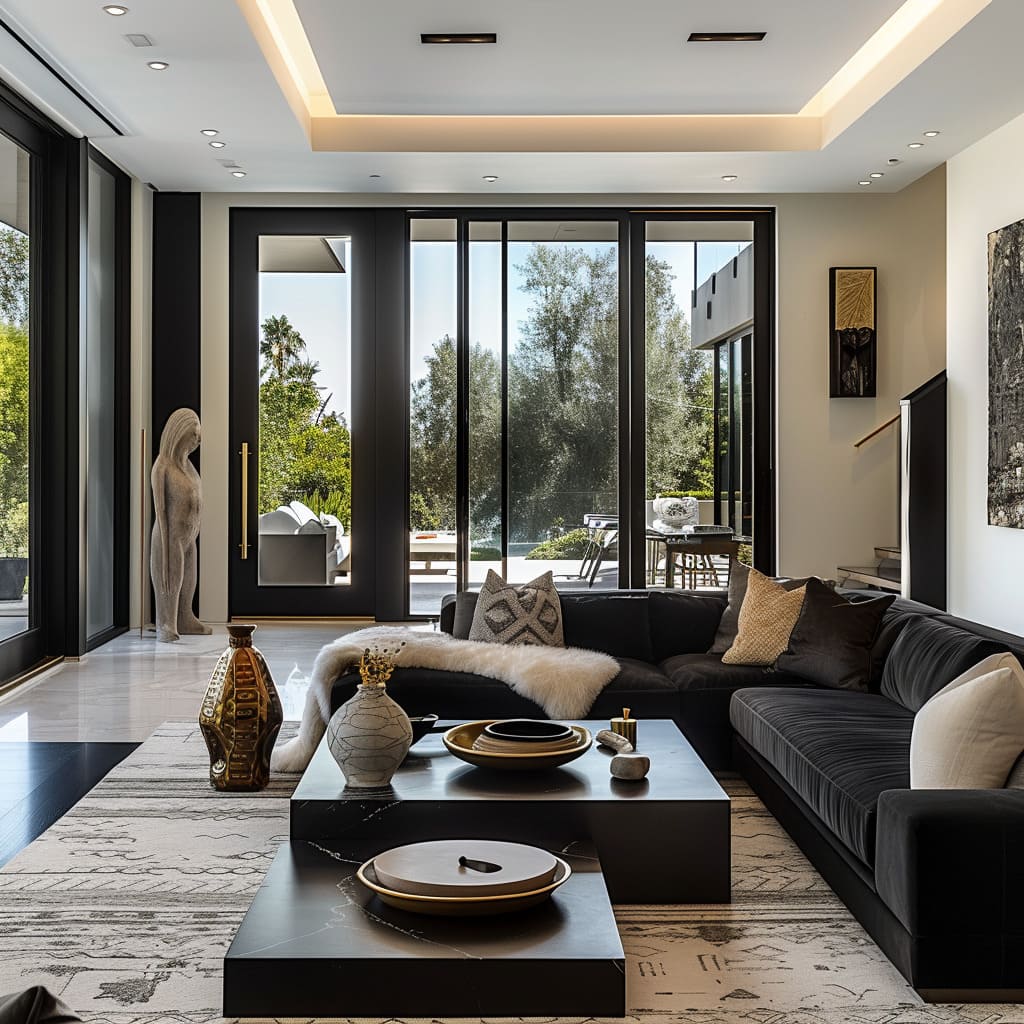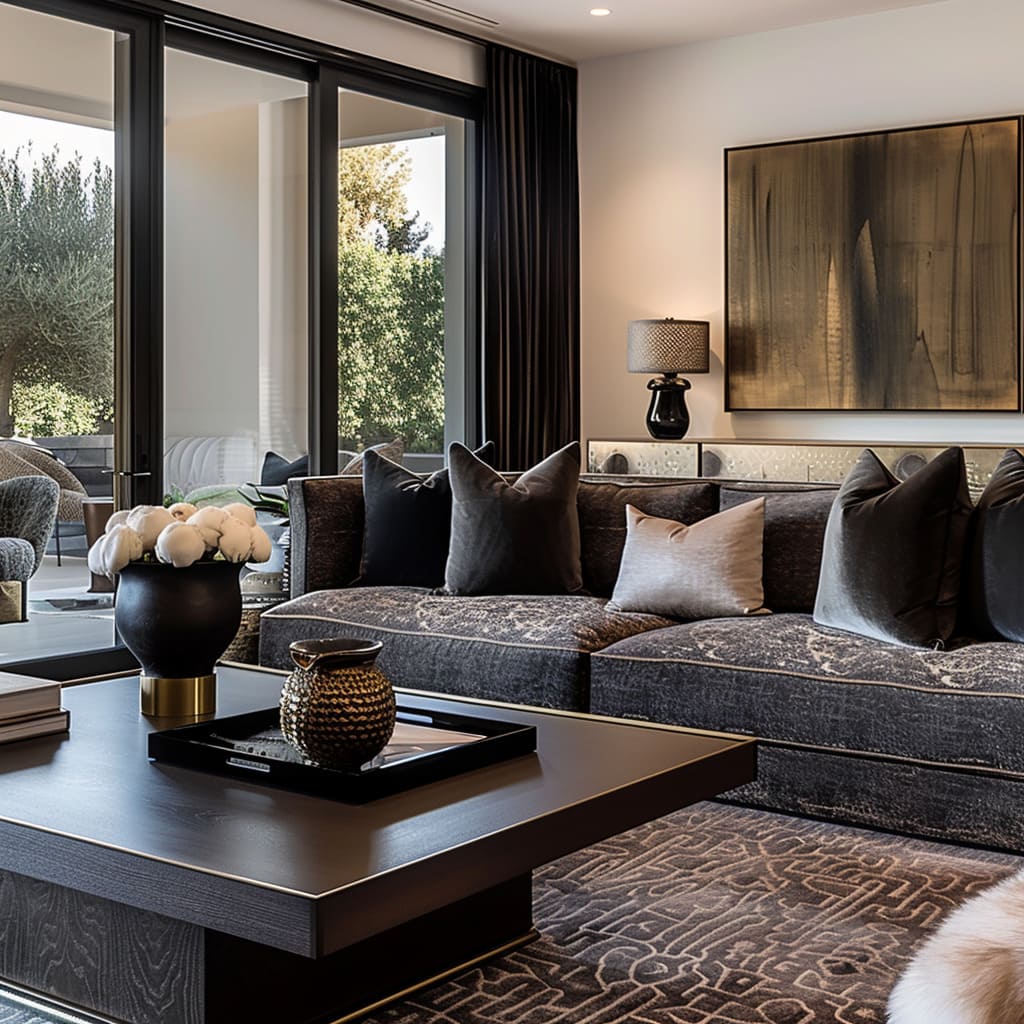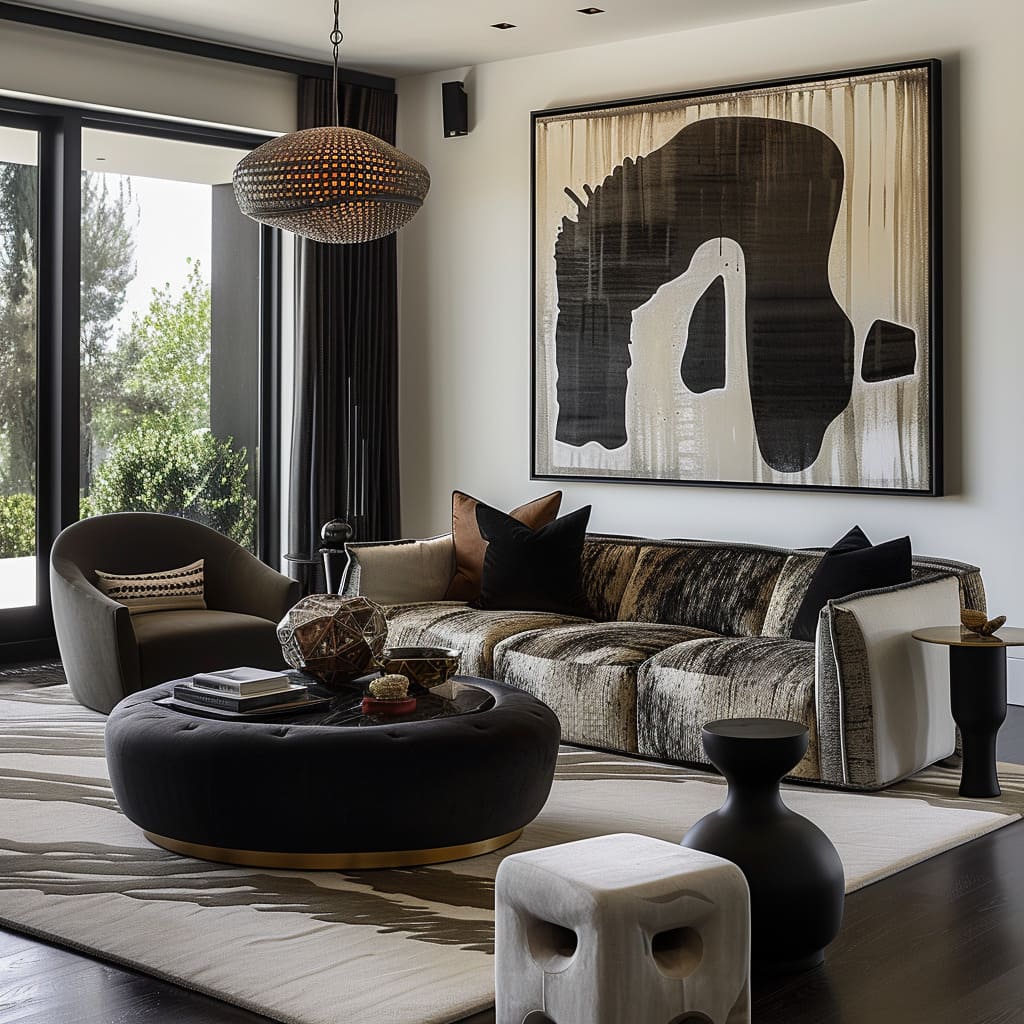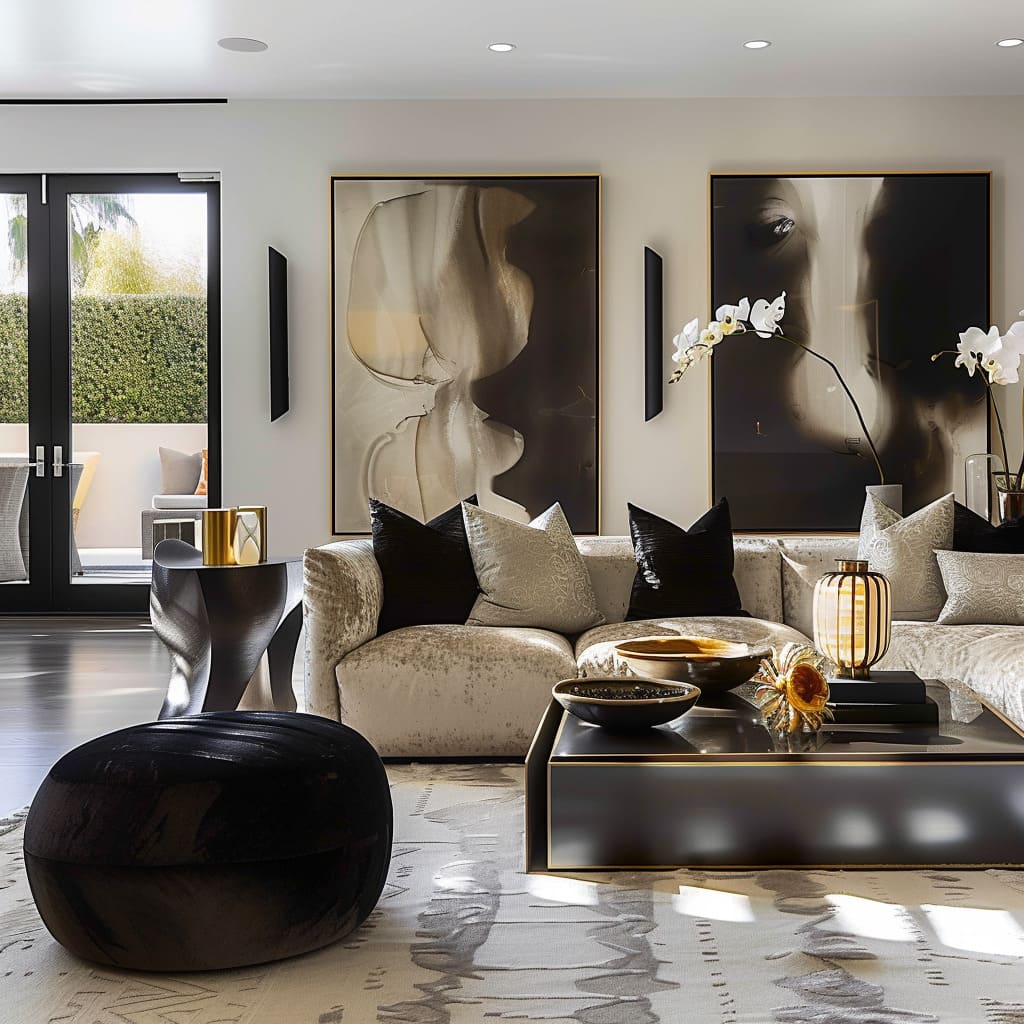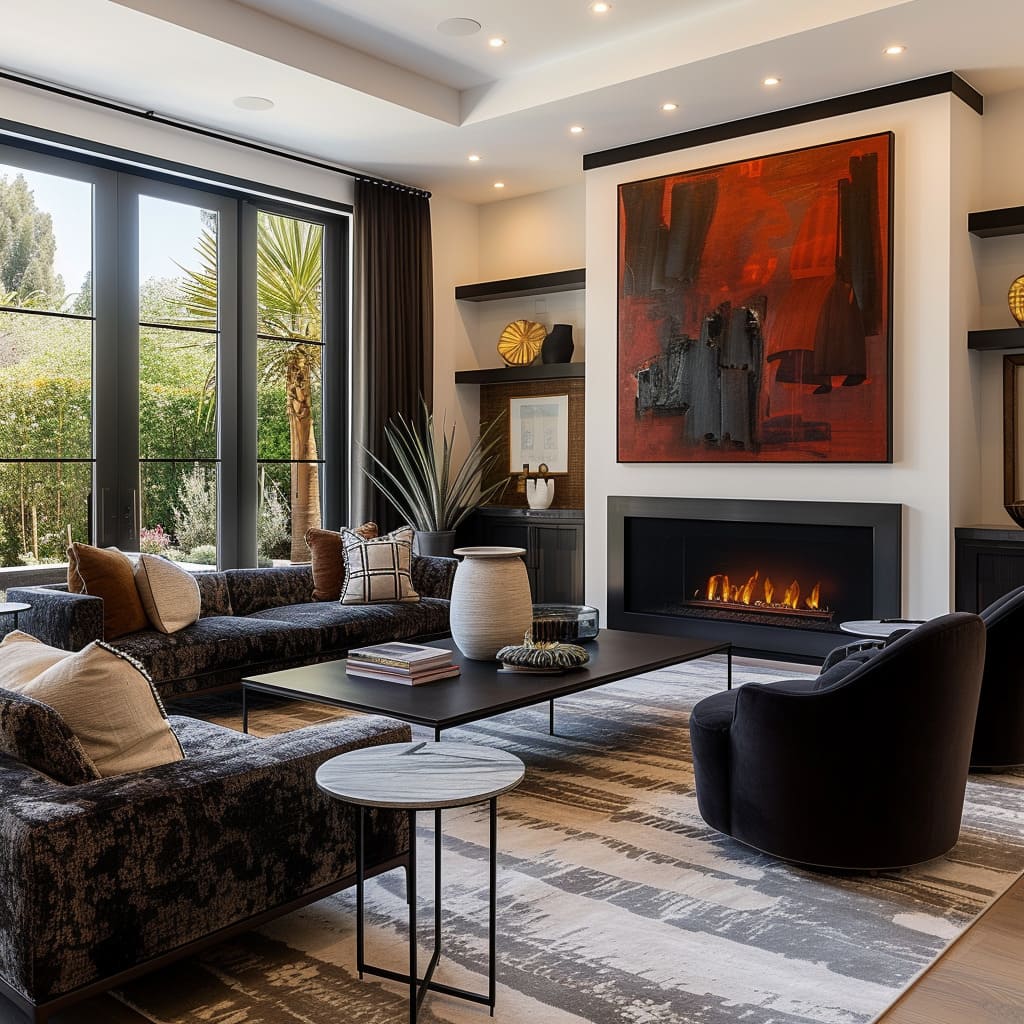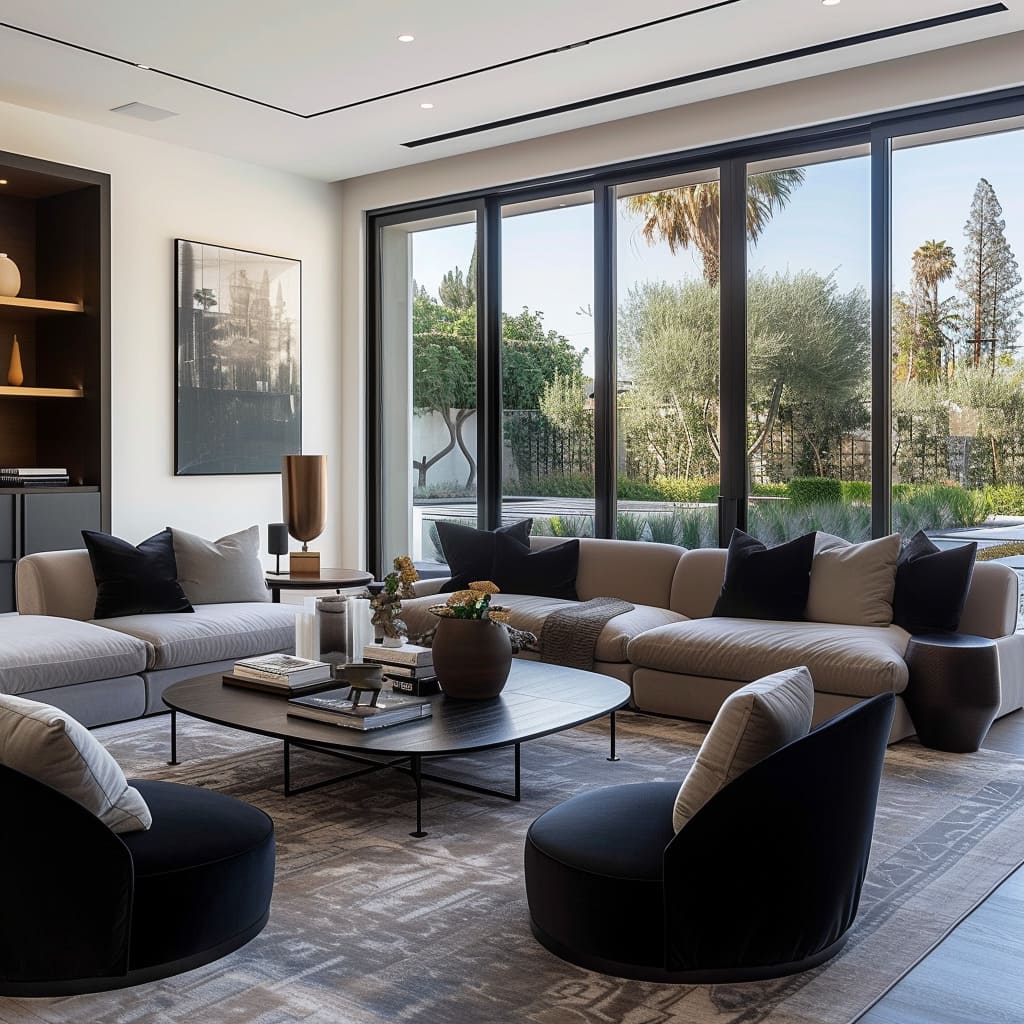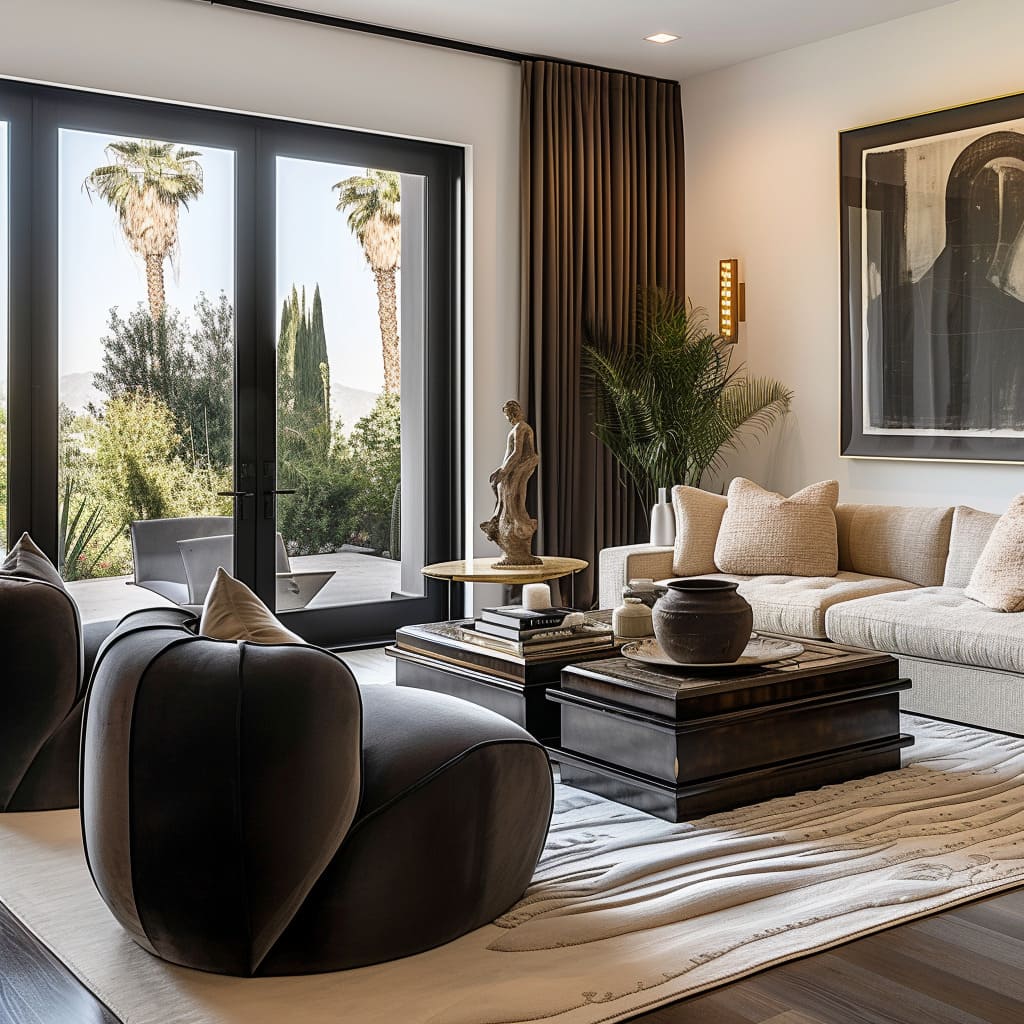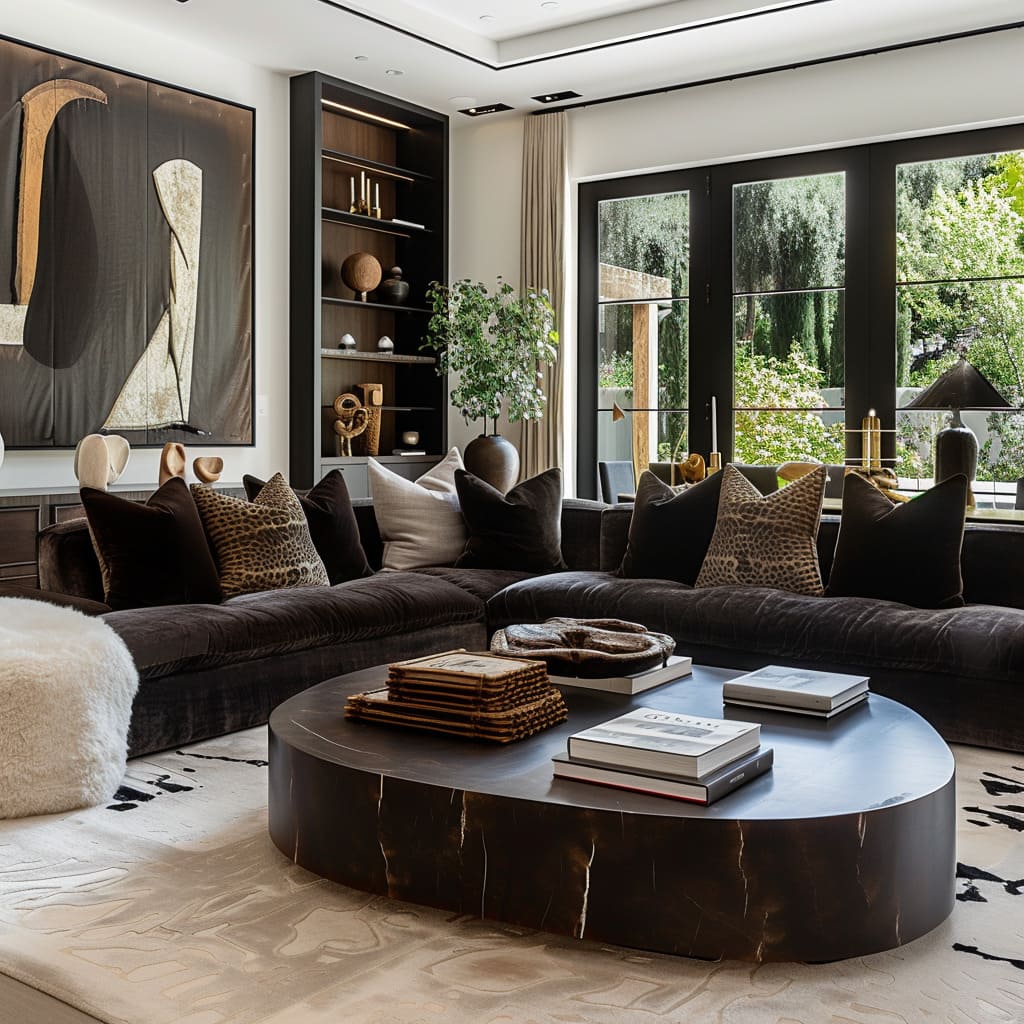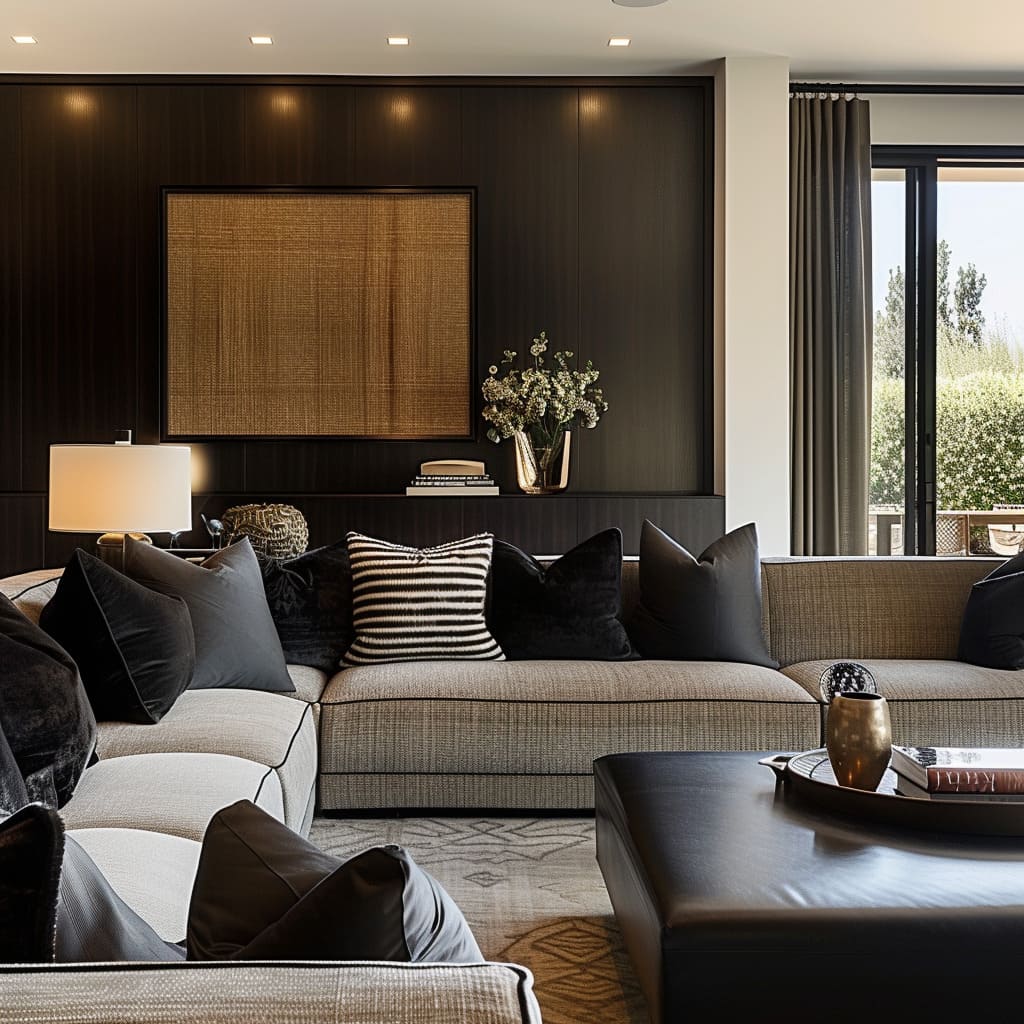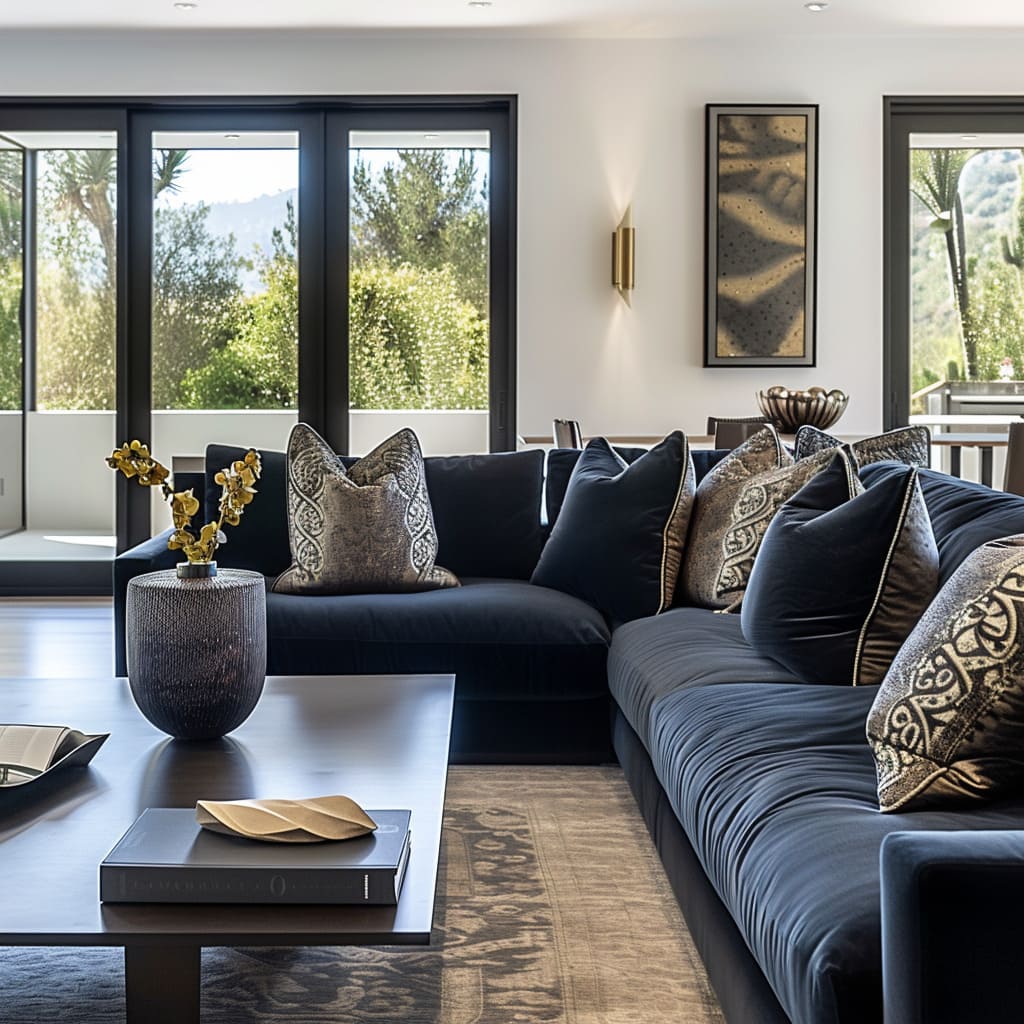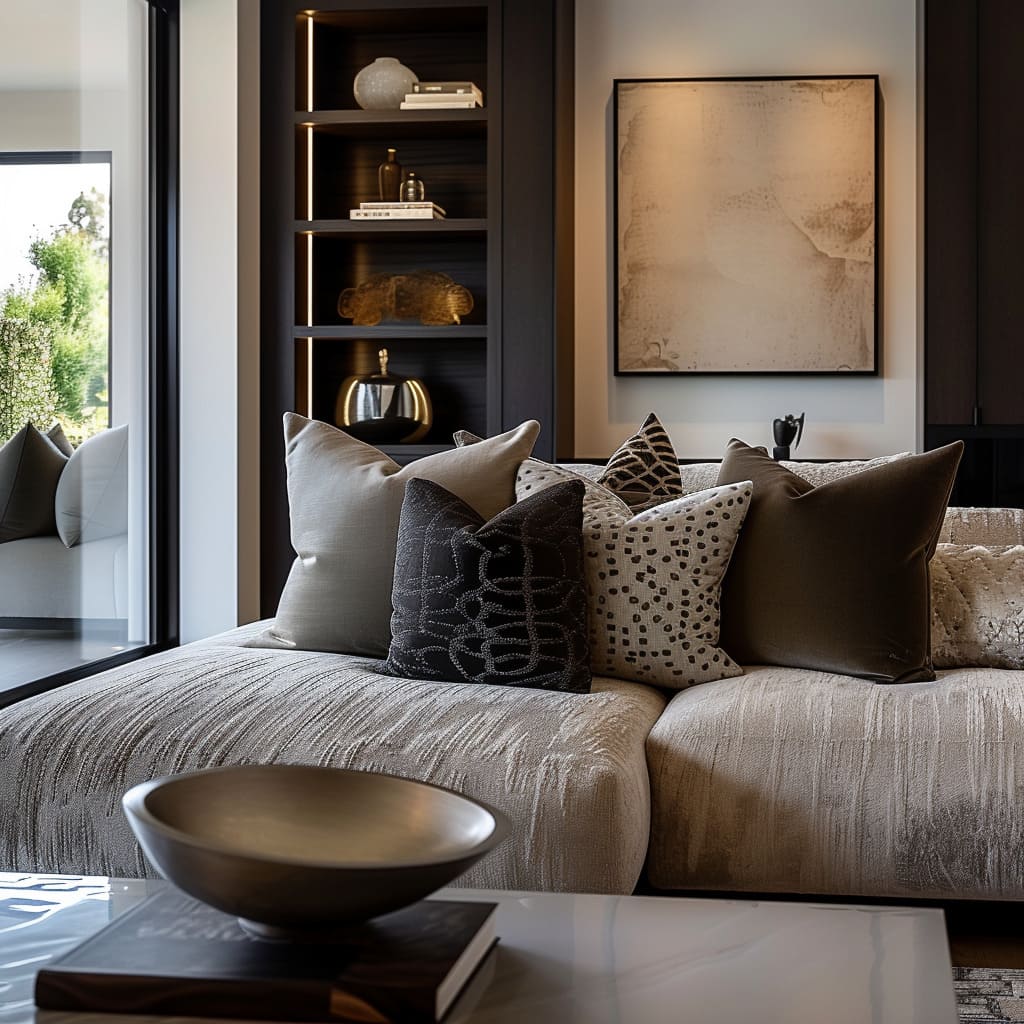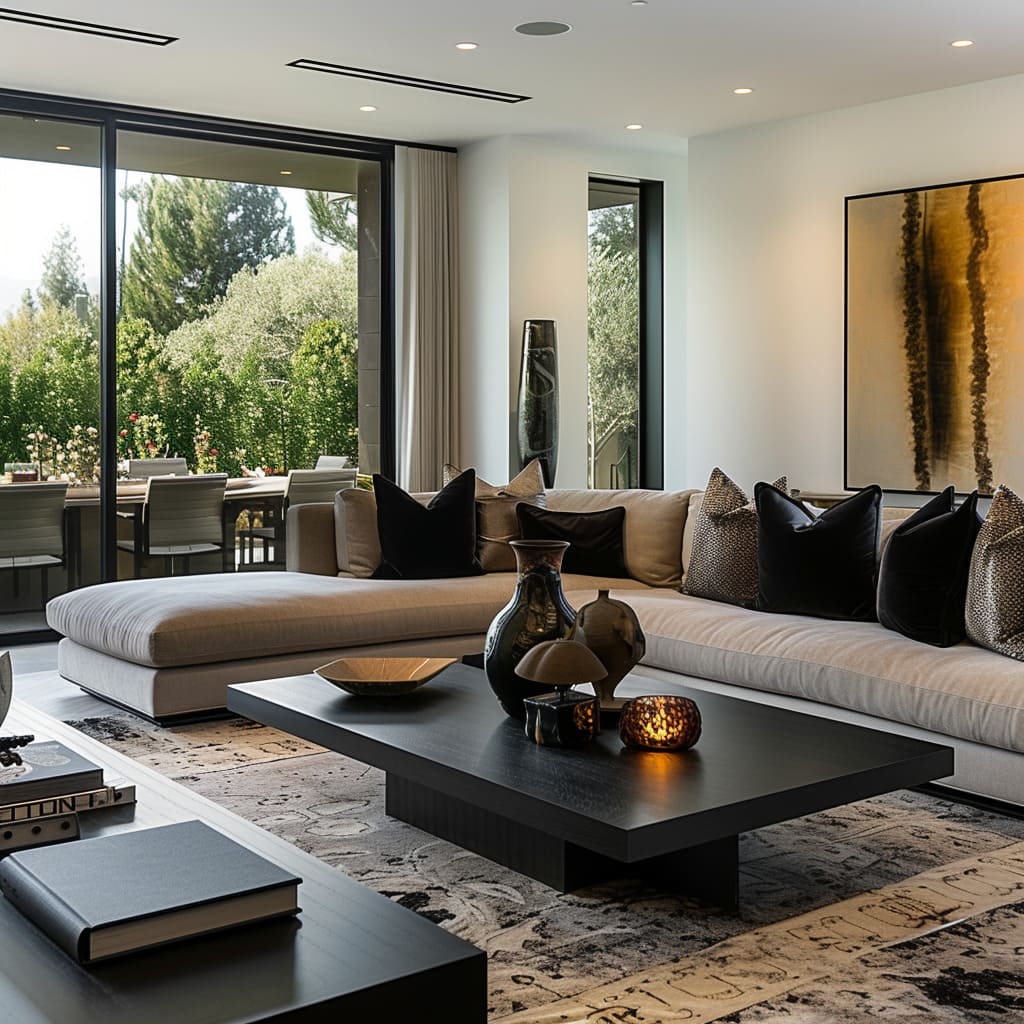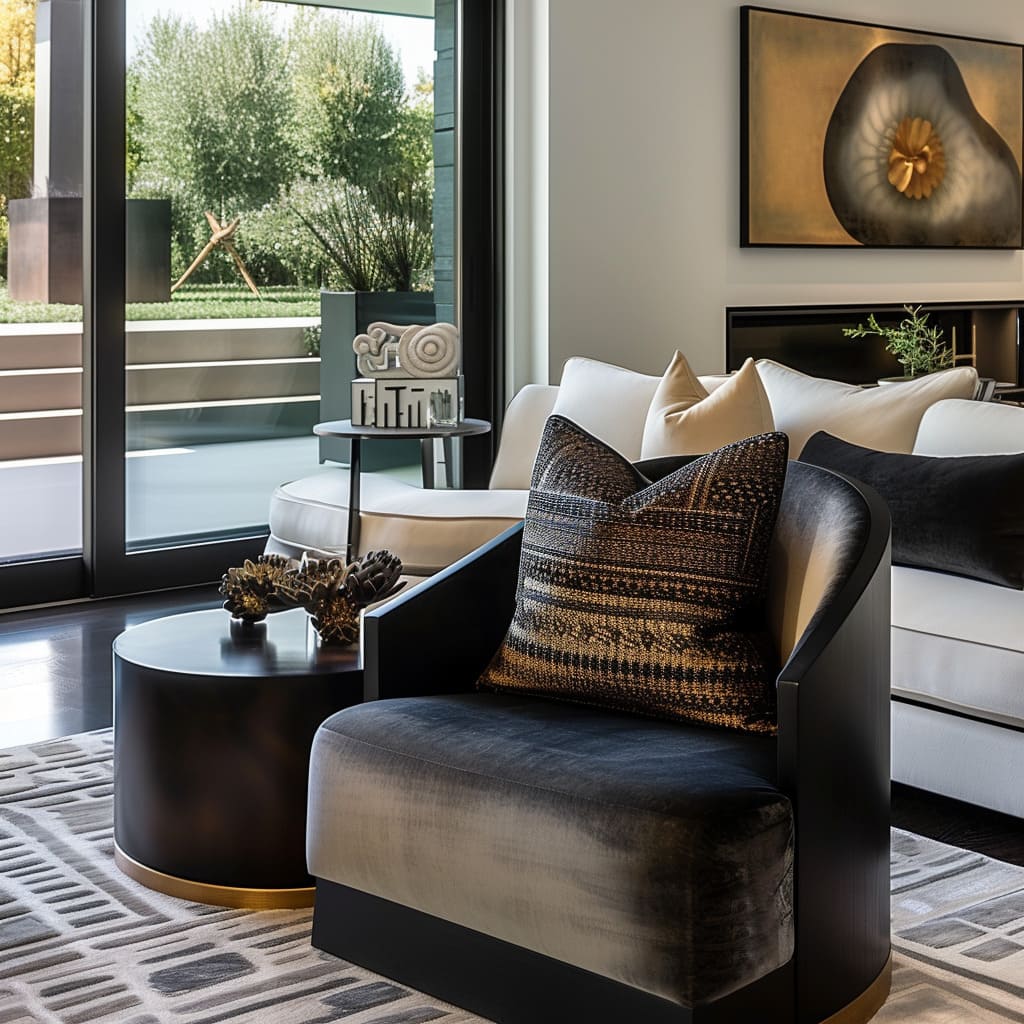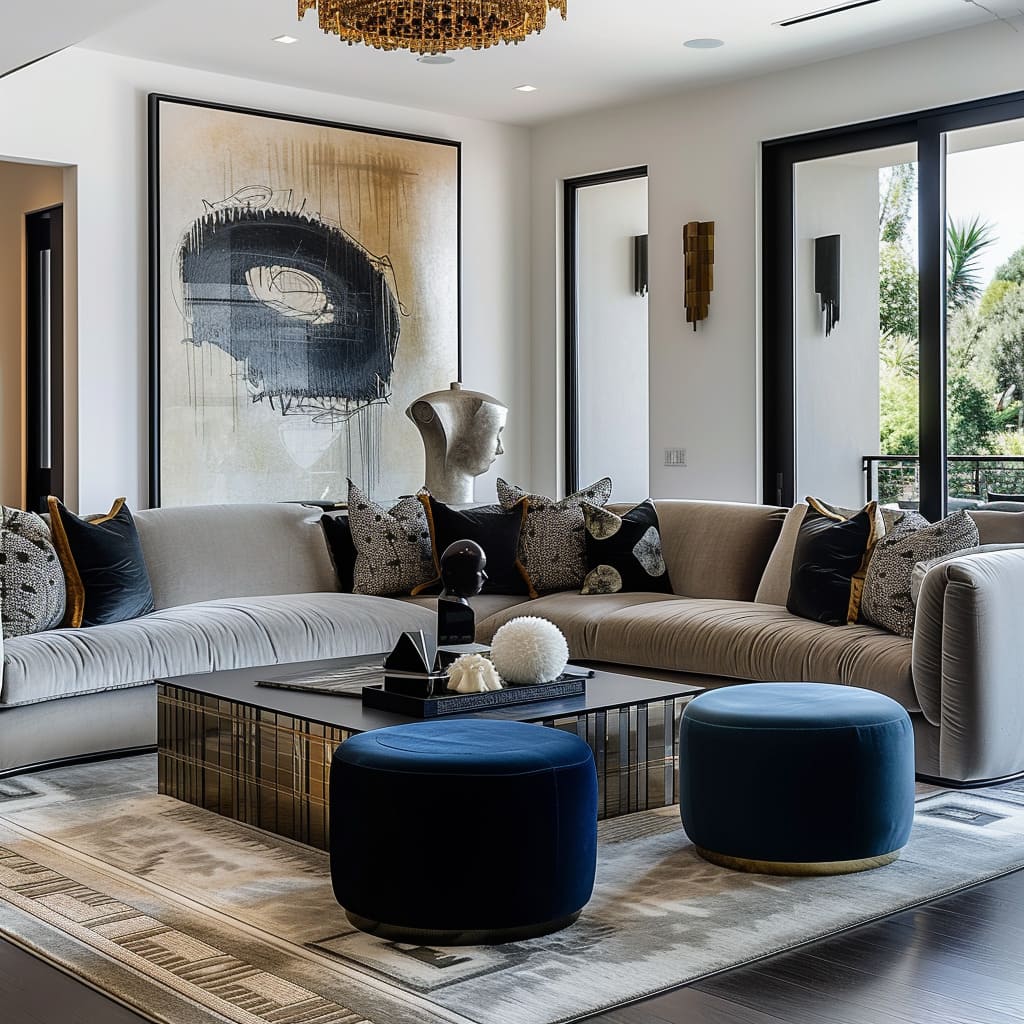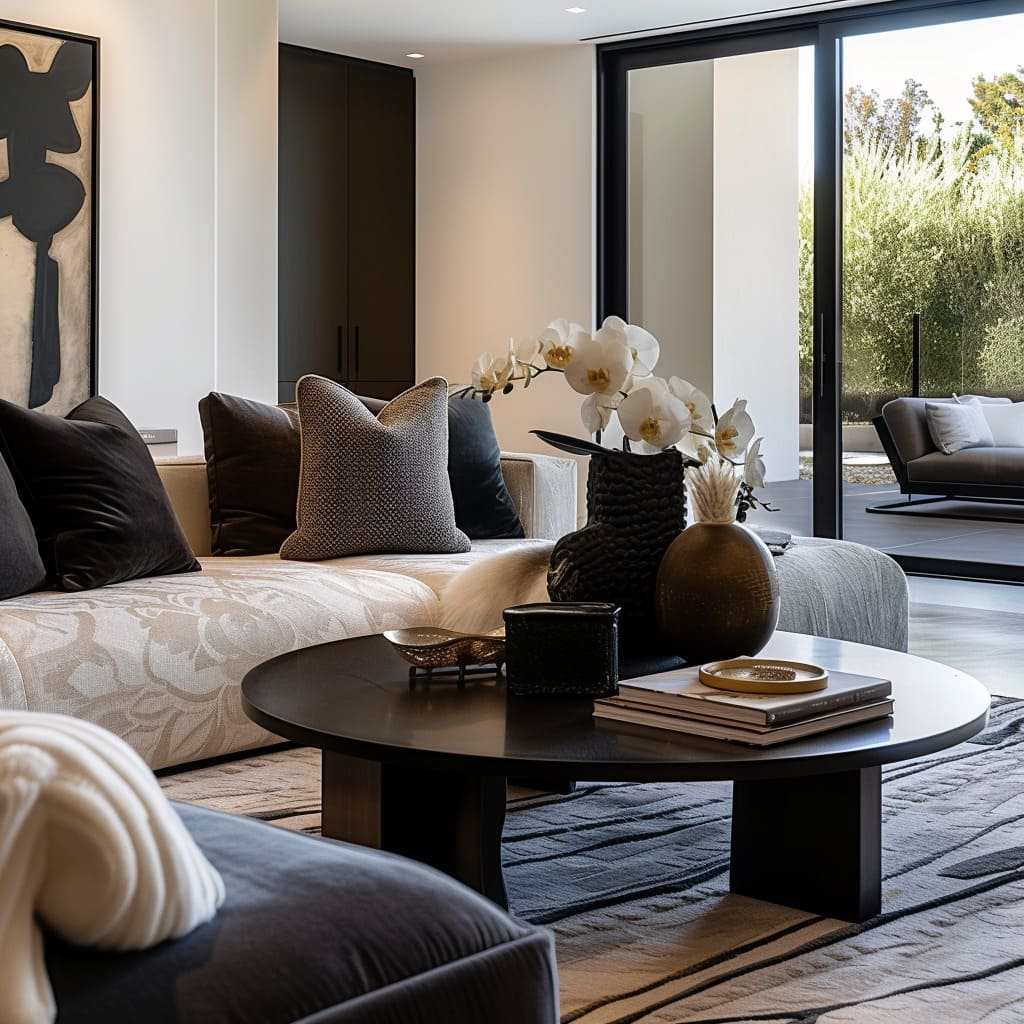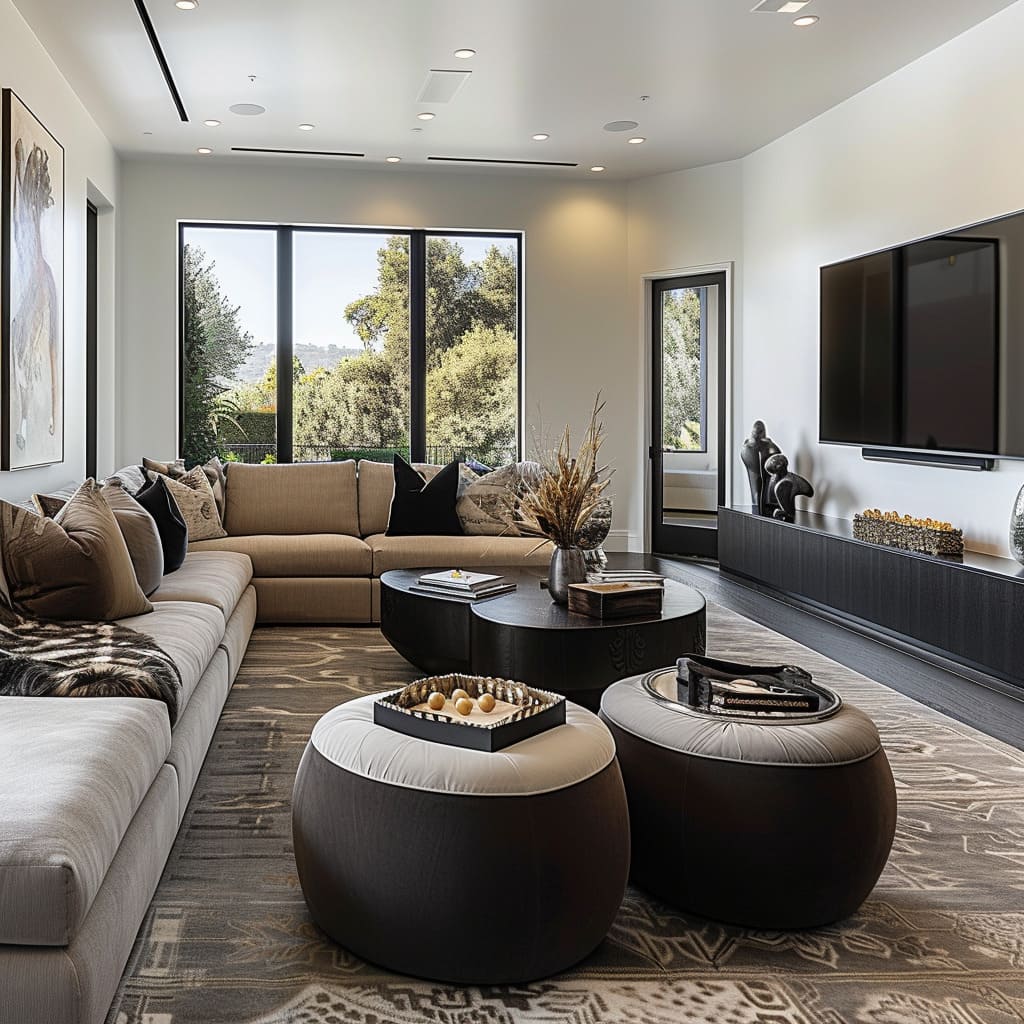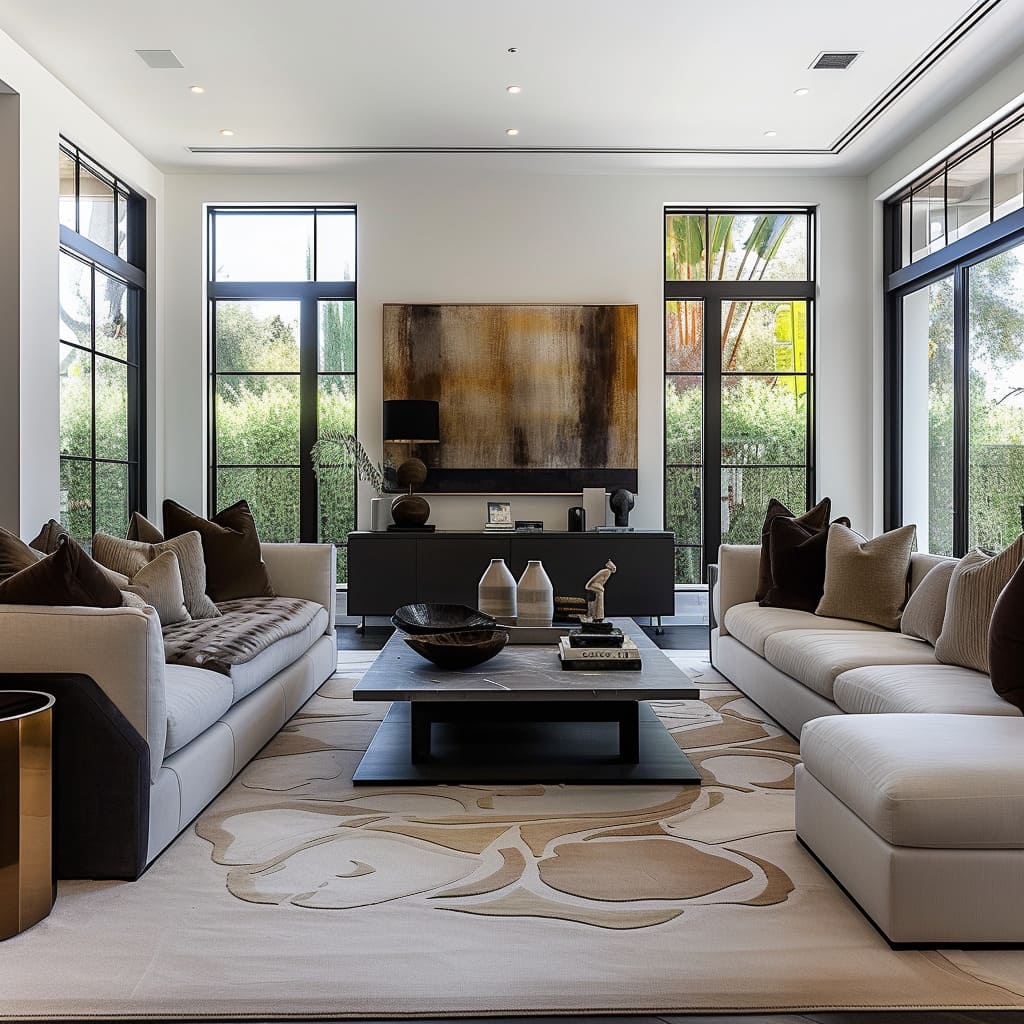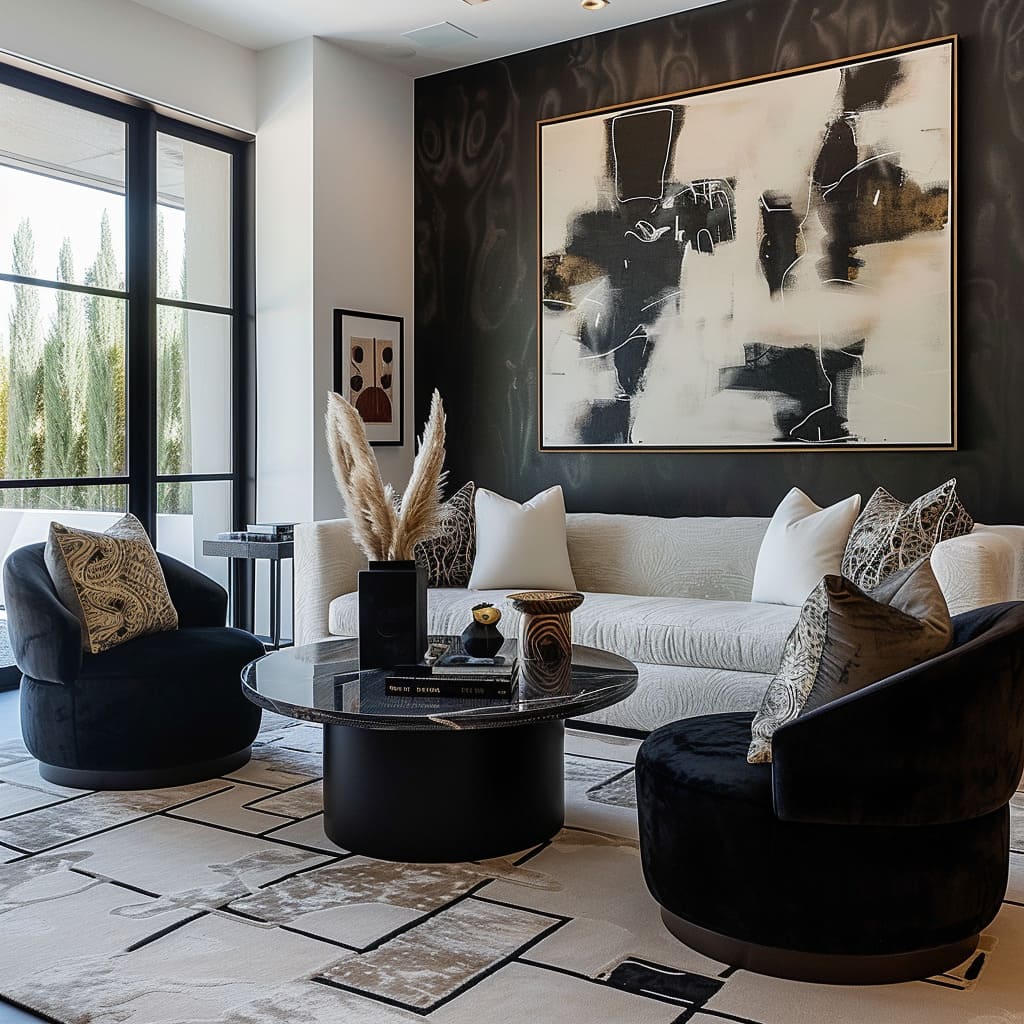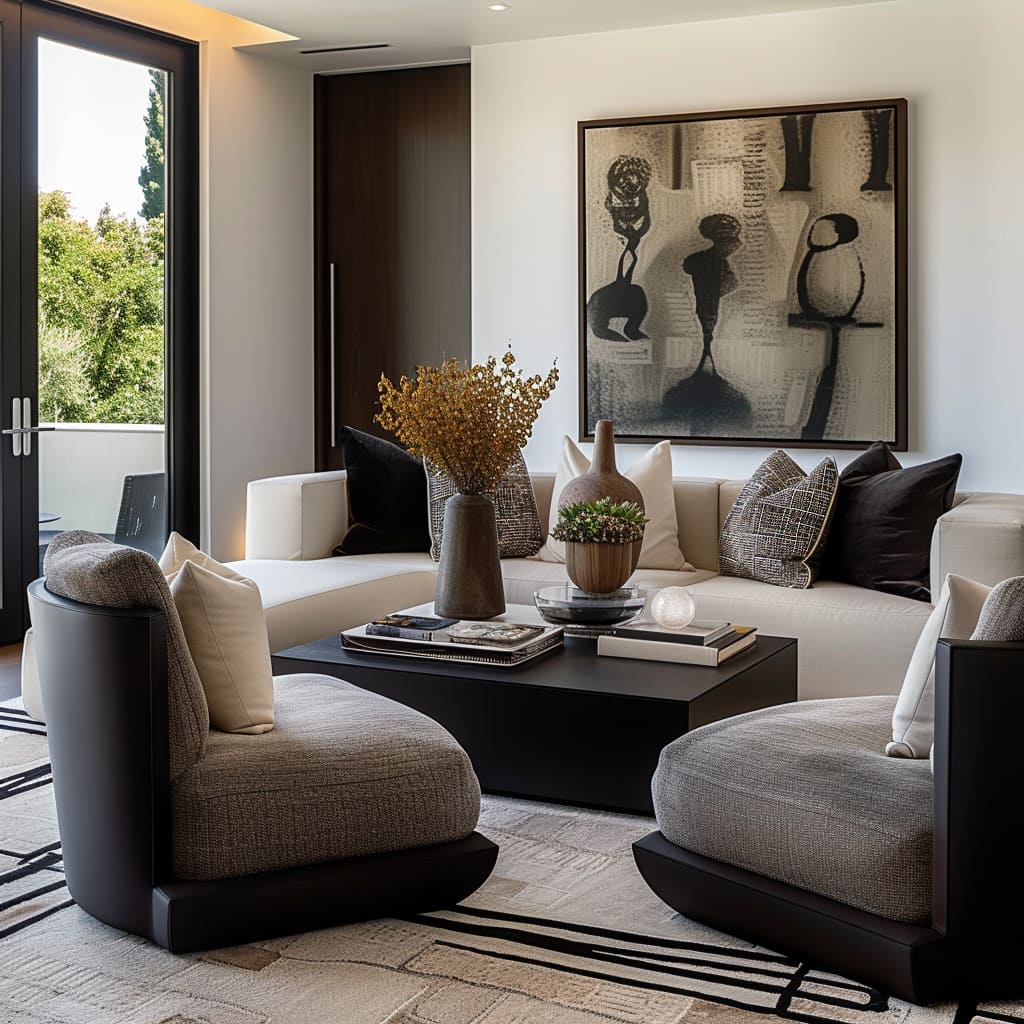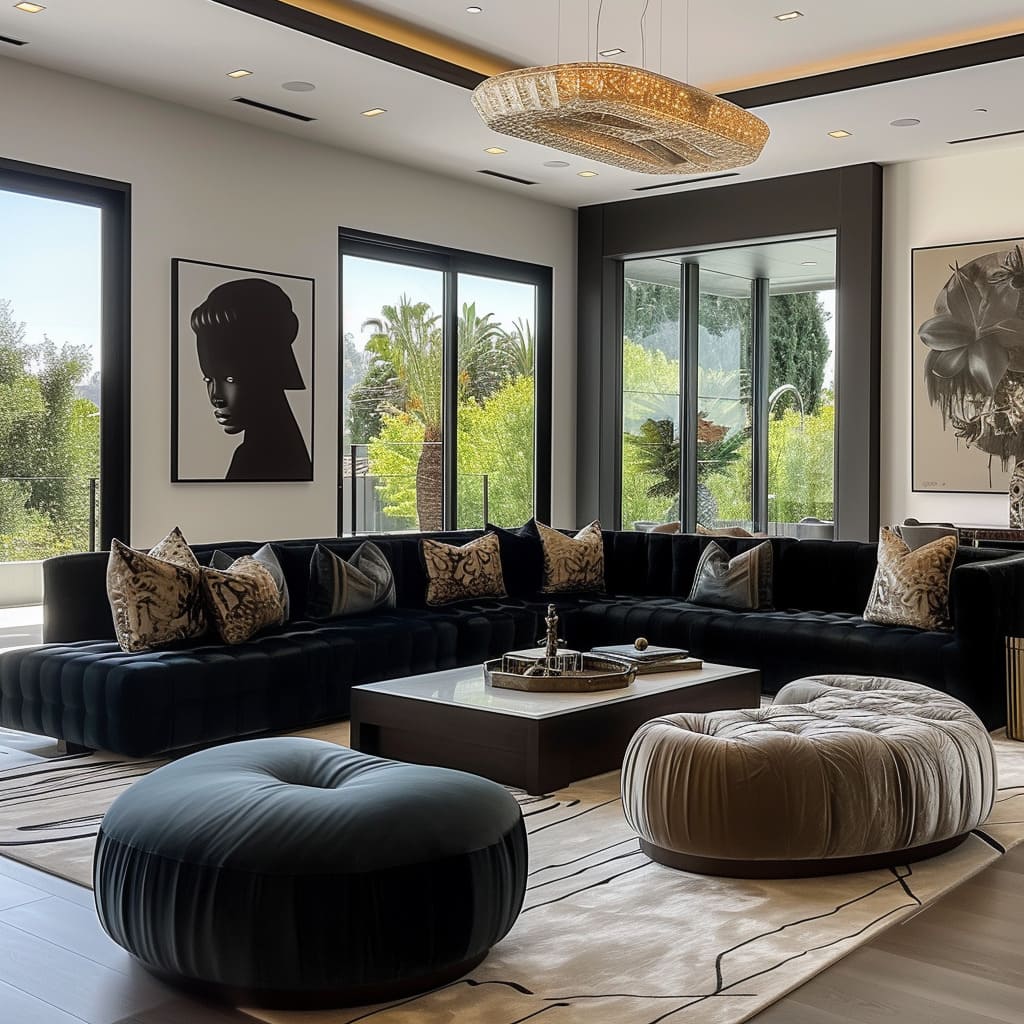In the art of interior design, every detail matters – from the palette of colors that paint the room’s mood to the textures that add depth and character. This article delves into the realms of color and texture, decor and art, furniture and layout, lighting and atmosphere, architectural and spatial design, materials and finishes, and the seamless integration of functionality and technology.
Each section is a testament to the intricate dance of elements that come together to create not just a living space, but a canvas of personal expression, comfort, and style. We explore how these various aspects harmonize to craft interiors that are not only visually stunning but also resonate with the rhythm of daily life and personal preferences.
Color and Texture
The power of a carefully curated color palette combined with the richness of varied textures can transform any space into a sanctuary of style. The understated elegance of a monochromatic and neutral palette lays the foundation for a sophisticated ambiance, where the interplay of light and shadow brings each detail into sharp relief.
This canvas is brought to life through the incorporation of luxurious textiles and the intricate dance of geometric and abstract patterns, all set against the backdrop of artfully textured walls. Let us delve into the nuances of color and texture that define the essence of modern interior elegance.
<h3>Monochromatic and Neutral Palette</h3> The color scheme is largely monochromatic, featuring various shades of whites, beiges, grays, and blacks, creating a cohesive and sophisticated ambiance. The subtlety of the palette is elevated by the interplay of shadows and light, which are naturally enhanced by the simplicity of the chosen colors.
To infuse such a palette into your space, focus on layering textures and materials within the same color family to add visual interest and depth without the need for bold color.
<h3>Luxurious Textiles</h3> The use of plush textiles is evident in the throw pillows and upholstery, adding texture and richness to the spaces. Velvety fabrics and intricately woven textiles on the furniture invite touch and provide a contrast to the sleek lines of the room.
To incorporate luxurious textiles into your interior, select high-quality fabrics for statement pieces like sofas and chairs, and don’t shy away from including a variety of tactile experiences through accessories like pillows and throws.
<h3>Geometric and Abstract Patterns</h3> Rugs and textiles feature geometric or abstract patterns that contribute to the modern vibe of the interiors. These patterns add a dynamic element to the rooms, breaking up the monochromatic themes with visual movement.
When selecting such patterns for your home, consider the scale and how it complements the furniture and space; larger rooms can handle bolder, bigger patterns, while smaller spaces may benefit from subtler designs.
<h3>Textured Walls</h3> Some walls are textured or have distinctive coverings, adding depth and interest to the rooms. The texture can vary from subtle plaster finishes to more pronounced 3D paneling, creating a tactile and visual focal point.
To achieve this in your interior, explore different wall treatments like textured wallpaper, decorative panels, or even a custom plaster finish to add a layer of sophistication to your room’s design.
Curating Decor with Purpose
A well-composed interior is akin to a visual symphony, where each element plays a crucial role in creating an atmosphere of refined taste and cultured sophistication.
It is in the artful selection of bold artwork, the gleaming touch of metallic accents, the restrained beauty of subtle ornamentation, and the characterful dialogue of accent pieces, that a room’s decor transitions from mere function to a form of silent poetry. This paragraph unfolds the layers of deliberate decor choices that blend artistry with intention, transforming living spaces into galleries of personal expression and elegance.
<h3>Bold Artwork</h3> The rooms feature large, striking pieces of art that often serve as the focal point, with abstract and contemporary styles prevalent. These artworks not only anchor the room but also inject a burst of creative energy, their bold strokes and expansive canvases commanding attention and conversation.
To incorporate this element, select a piece that resonates with your personal taste and place it in a position where it naturally draws the eye, such as above a sofa or as the centerpiece of a main wall.
<h3>Metallic Accents</h3> Splashes of metallics, such as gold and brass, appear in the decor and lighting fixtures, adding a touch of glamour. These reflective surfaces capture and play with light, contributing to the dynamic atmosphere of the room.
When integrating metallic accents, consider their placement in relation to light sources to maximize the shimmer effect, and choose pieces like metallic-framed mirrors or brass light fixtures for a sophisticated finish.
<h3>Subtle Ornamentation</h3> Decor items are chosen for their subtle elegance and are not overly ornate or flashy. This approach ensures that each piece adds to the aesthetic of the space without overwhelming it.
Think of using simple lines and understated elegance in items like candle holders, picture frames, or small statuettes that complement the room’s color scheme and texture.
<h3>Accent Pieces</h3> Strategic use of accent pieces like sculptures and vases adds personality without cluttering the space. These items are selected not just for their aesthetic appeal but also for their ability to harmonize with the room’s overall design.
When selecting accent pieces for your space, consider those with unique but not overpowering designs, and allow ample negative space around them to let the pieces stand out and become points of visual interest.
Furniture and Layout
The quintessence of a refined interior lies not just in the beauty of individual pieces but in the symphonic harmony of furniture and layout. High-end furnishings that exude elegance, a minimalist approach that speaks volumes through simplicity, the grandeur of oversized seating, and the strategic arrangement that fosters connection and conversation.
These are the hallmarks of a thoughtfully designed space. This paragraph explores the meticulous selection and placement of furniture that characterizes a home as an oasis of comfort and a bastion of style, where every piece is a testament to quality and every layout decision enhances the art of living well.
<h3>High-End Furniture</h3> Furniture pieces are of high quality, with many appearing custom or designer-made, featuring sleek lines and luxurious fabrics like velvet. The craftsmanship is evident in the precise stitching, the thoughtful proportions, and the comfort they afford.
The use of high-end furniture denotes a preference for lasting quality and design over fleeting trends. When choosing furniture for your space, opt for timeless pieces that boast both form and function, ensuring they will stand the test of time in both style and durability.
<h3>Minimalist Approach</h3> There is a minimalist feel to the decor, with a less-is-more approach that emphasizes quality over quantity. This is not about starkness; rather, it is the art of paring down to the essentials to create a serene and uncluttered environment.
Each item in the room is intentional, with a focus on space as a component of design. Embrace the minimalist approach by selecting few but impactful pieces of furniture and decor that bring joy and purpose, rather than filling the space with items that serve no function or beauty.
<h3>Oversized Furniture</h3> Large, expansive sofas and chairs not only provide comfort but also underscore the grandeur of the spaces. They invite lounging and relaxation, their generous proportions offering a luxurious experience.
When incorporating oversized furniture into your home, ensure there is a balance of scale in the room, with ample walking space and proportional decor elements to create a cohesive look that doesn’t overwhelm the space.
<h3>Spacious Seating Arrangements</h3> Seating is arranged to facilitate conversation, with spacious layouts that promote social interaction. The arrangement is key here, with sofas and chairs positioned to face each other to encourage engagement among guests.
To achieve this in your own home, consider the flow of movement through the room and arrange seating to create intimate areas within the larger space, making sure each seat has a comfortable view of others in the room.
Lighting and Atmosphere
A well-designed space is not just seen, it is felt. It is the delicate balance between form and function, the dance of light across surfaces, and the symmetry that commands a room.
The interplay of statement lighting and layered illumination, combined with the structured grace of clean lines and symmetrical layouts, establishes more than just visual appeal—it creates an atmosphere.
This paragraph will delve into the nuances of how lighting can sculpt and define spaces, and how the harmony of furniture arrangement contributes to the overall atmosphere, creating environments that are not only beautiful to behold but also inherently balanced and inviting.
<h3>Statement Lighting</h3> Chandeliers and modern lighting fixtures are used as statement pieces that complement the overall design aesthetic. These lighting elements are not just functional; they are sculptural masterpieces that define the space, creating an ambiance that’s both luxurious and contemporary.
The chosen fixtures reflect a blend of artistic form and illumination, with designs that range from sleek and minimalist to complex and eye-catching. To make a statement with lighting in your own space, look for pieces that serve as the centerpiece of the room, matching the scale of the space and the furniture within it.
<h3>Layered Lighting</h3> A combination of natural, ambient, and accent lighting is used to create a well-lit space that’s functional and inviting. The layering of light sources allows for flexibility in setting the mood and functionality of the room, whether it’s the gentle glow of table lamps, the focused light of task lamps, or the soft wash of wall sconces.
The key is to use a variety of light sources at different levels and intensities to create depth and warmth. In your home, consider the activities that take place in each space and layer your lighting accordingly, providing a mix of overhead, accent, and task lighting to suit every occasion.
<h3>Clean Lines</h3> Furniture and decor pieces exhibit clean, crisp lines, which contribute to a tidy and orderly appearance. The simplicity of form seen emphasizes an uncluttered aesthetic where every piece feels purposeful and intentional.
This design philosophy not only creates a modern and sleek look but also promotes a sense of calm and order. To achieve this in your own space, select furniture with straight lines and streamlined forms, and pair them with decor that complements this aesthetic to maintain a coherent and modern vibe throughout.
<h3>Symmetry and Balance</h3> The arrangement of furniture and decor often reflects symmetry, contributing to a balanced and harmonious look. Pairs of lamps, mirrors, or furniture are placed to create a sense of equilibrium that is pleasing to the eye.
This symmetrical setup not only provides visual stability but also evokes a formal and elegant atmosphere. To incorporate symmetry and balance in your interior, try to create pairs or arrange items in an even distribution, ensuring that the visual weight of the space is balanced on either side of a central axis.
Architectural and Spatial
The essence of impactful interior design lies not only in the decor but also in the architectural and spatial arrangement of a home. It is a symphony of open floor plans promoting fluidity and interaction, the embrace of natural light through large windows connecting the indoors with the world outside, the character of architectural features adding depth and elegance, and the seamless fusion of traditional and contemporary elements in transitional spaces.
This paragraph delves into how these architectural and spatial elements come together to create environments that are not just aesthetically pleasing, but also functional and harmonious, offering a sanctuary that resonates with the rhythm of daily life and personal style.
<h3>Open Floor Plan</h3> The rooms demonstrate an open floor plan, enhancing the sense of space and fluidity between areas. This layout fosters a social environment, where the boundaries between dining, living, and even kitchen areas are blurred, creating a versatile and inclusive space.
The open plan is accentuated with consistent flooring and a harmonious color scheme that ties the different areas together. To achieve this in your own home, focus on a unified design theme and minimize barriers by using furniture and rugs to subtly define different zones within the open space.
<h3>Large Windows</h3> The presence of large windows not only floods the spaces with natural light but also creates a connection with the outdoors. The expansive glass panes offer picturesque views and make the room feel more expansive and open.
When utilizing large windows in your design, consider their orientation for optimal natural light and view, and complement them with minimal window treatments to enhance the sense of openness and connection to the outdoor environment.
<h3>Architectural Features</h3> Architectural elements like recessed ceilings and detailed moldings add character and sophistication. These features are not just decorative but also help to define the space and create visual interest.
Recessed ceilings can give an illusion of height and grandeur, while moldings add a touch of elegance and tradition. To incorporate such features, work with the existing architectural elements of your home and choose enhancements that align with the overall aesthetic you wish to achieve.
<h3>Transitional Spaces</h3> The design incorporates elements that allow for a seamless transition between traditional and contemporary styles. This is achieved through a careful balance of modern furnishings and classic design elements.
The transitional style is all about blending the old with the new in a cohesive manner. To create transitional spaces in your home, mix classic pieces like a traditional chandelier or vintage rug with modern furniture and art, ensuring that the color palette and materials harmonize to unify the different styles.
Materials and Finishes
The magic often lies in the details – specifically, the materials and finishes chosen to bring a space to life. The interplay of reflective surfaces, the grounding presence of natural elements, and the rich diversity of mixed materials; these are the ingredients that transform a house into a home with depth, character, and personality.
This paragraph explores the strategic use of mirrors, glass, and glossy finishes to create dynamic spaces, the incorporation of organic and natural textures for warmth and balance, and the artful combination of diverse materials to craft an interior that is both visually captivating and sensorially rich.
<h3>Reflective Surfaces</h3> Mirrors, glossy finishes, and glass elements are used to reflect light and create a more dynamic space. These reflective surfaces are strategically placed to amplify natural light and enhance the visual space.
Mirrored decor and high-gloss furniture finishes add a touch of sophistication and a modern flair. To incorporate reflective surfaces in your interior, consider adding a large mirror as a focal point in a room or using furniture with glossy or mirrored finishes.
Ensure these elements are positioned to maximize the reflection of light and to visually expand the space.
<h3>Natural Elements</h3> While the spaces are modern, there’s an inclusion of natural elements like plants or organic shapes that add warmth and life. The living rooms showcase how indoor greenery, wooden accents, and organic forms can soften the modernity of a space, creating a more inviting and relaxing atmosphere.
Incorporating natural elements can be as simple as adding potted plants, using wooden furniture or accessories, or choosing decor with organic lines and shapes. This approach helps to bring a piece of the outdoors inside, promoting a sense of well-being and connection to nature.
<h3>Mixed Materials</h3> A mix of materials such as wood, metal, glass, and textiles adds complexity and interest to the interiors. This combination is evident, where the interplay of different textures and finishes creates a layered and sophisticated look.
Wood brings warmth and texture, metal adds a sleek and contemporary edge, glass offers transparency and lightness, and textiles provide comfort and softness. To achieve this mix in your own space, focus on combining materials in a way that balances their inherent qualities.
Pair smooth with textured, hard with soft, and matte with glossy for a rich and harmonious interior.
Functional and Technological
In the modern home, the intersection of functionality and technology forms the cornerstone of intelligent design. It’s where practicality meets aesthetic, and technology harmonizes with lifestyle.
This approach is vividly illustrated in the concept of functional decor, which combines utilitarian objects with decorative appeal, and in the seamless integration of technology, ensuring it enhances rather than interrupts the living space. This paragraph will explore how carefully chosen decor can serve dual purposes, adding both beauty and usefulness, and how technology can be woven into the fabric of our homes, becoming an unobtrusive yet integral part of our daily lives.
<h3>Functional Decor</h3> Items such as books and decorative bowls serve a dual purpose, both functional and aesthetic. In the interior designs you provided, these items are not just randomly placed but are carefully curated to enhance the room’s character and usability.
For example, books are arranged in a way that invites reading and exploration, often in bespoke shelving or artistic stacks, while decorative bowls and vases are used to add a touch of elegance and can also hold practical items.
To incorporate functional decor in your home, choose items that you love and that also serve a purpose, such as beautiful storage boxes or unique coasters, and arrange them in a way that complements the room’s layout and design.
<h3>Integrated Technology</h3> Sleek televisions and integrated sound systems are present, blending seamlessly with the design. The technology is incorporated in a way that it enhances the space without overpowering it.
Televisions are mounted flush with the wall or integrated into custom cabinetry, and sound systems are inconspicuously placed to ensure aesthetics are not compromised.
To integrate technology in your home, consider the overall design of the room. Mount TVs on walls or inside custom-built units that match your decor.
For sound systems, use built-in speakers or select designs that complement your interior style. The goal is to make technology a part of the room’s design, not an afterthought.
In conclusion, the journey through the various facets of interior design reveals a world where every choice is intentional, every design element serves a purpose, and harmony is achieved through the thoughtful integration of color, texture, light, and form. From the bold statement of art pieces to the subtle elegance of functional decor, from the grandeur of high-end furniture to the innovative integration of technology, each aspect contributes to the holistic beauty of a space.
This exploration serves as a guide, inspiring homeowners and designers alike to view their spaces as canvases for creativity, where the blending of different elements can create a home that is not only a reflection of personal style but also a haven of comfort and functionality. Let the insights from this journey illuminate your path to designing spaces that resonate with elegance, balance, and a sense of personal sanctuary.


